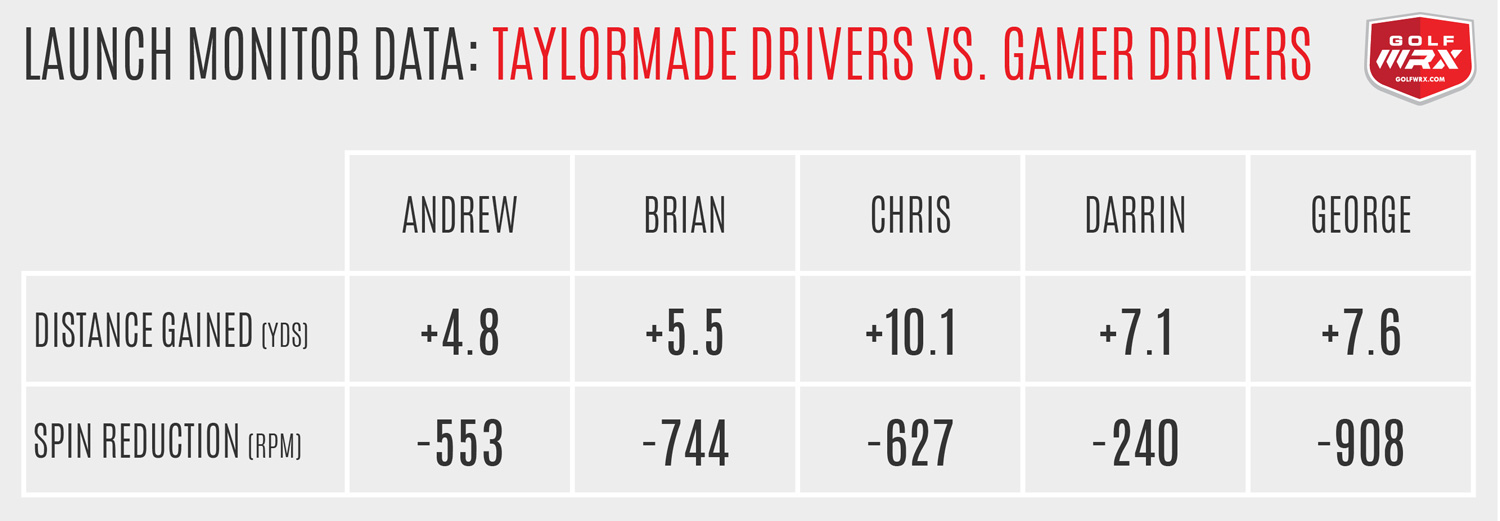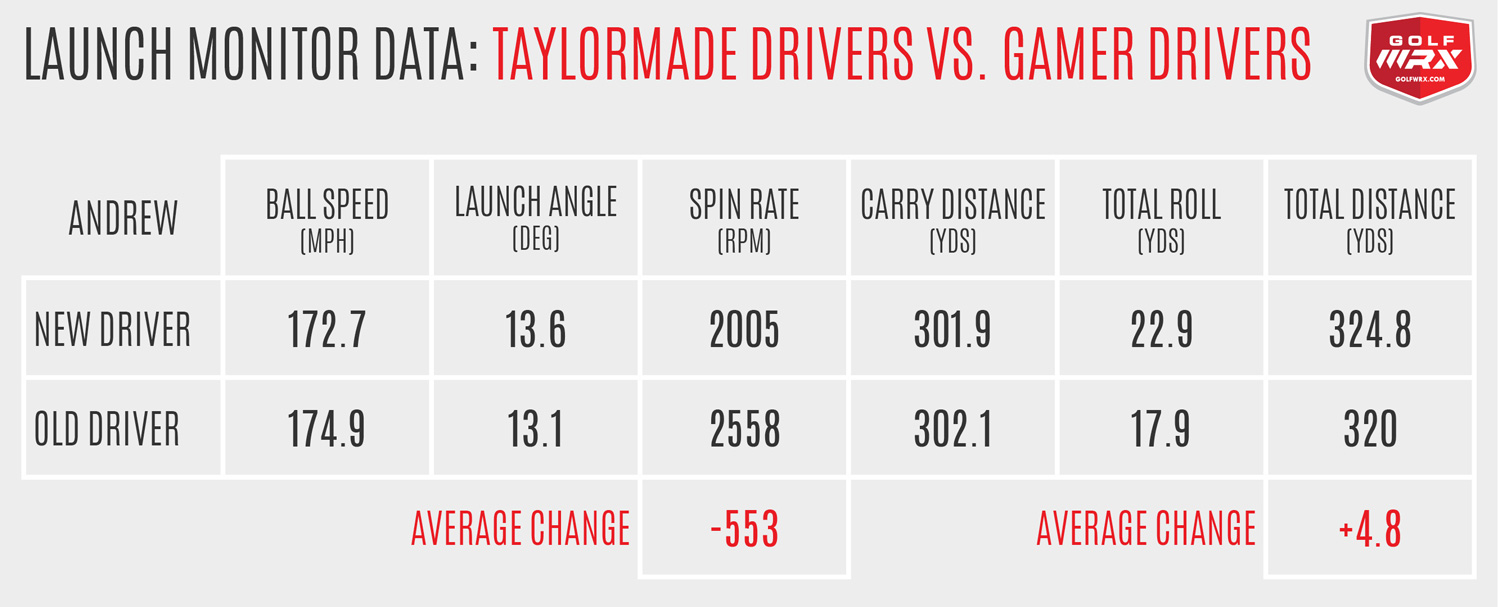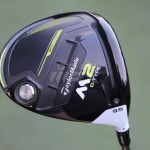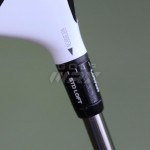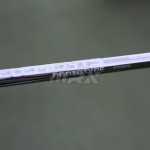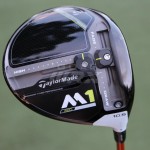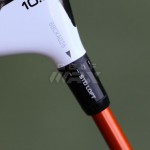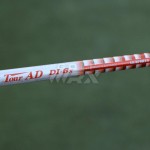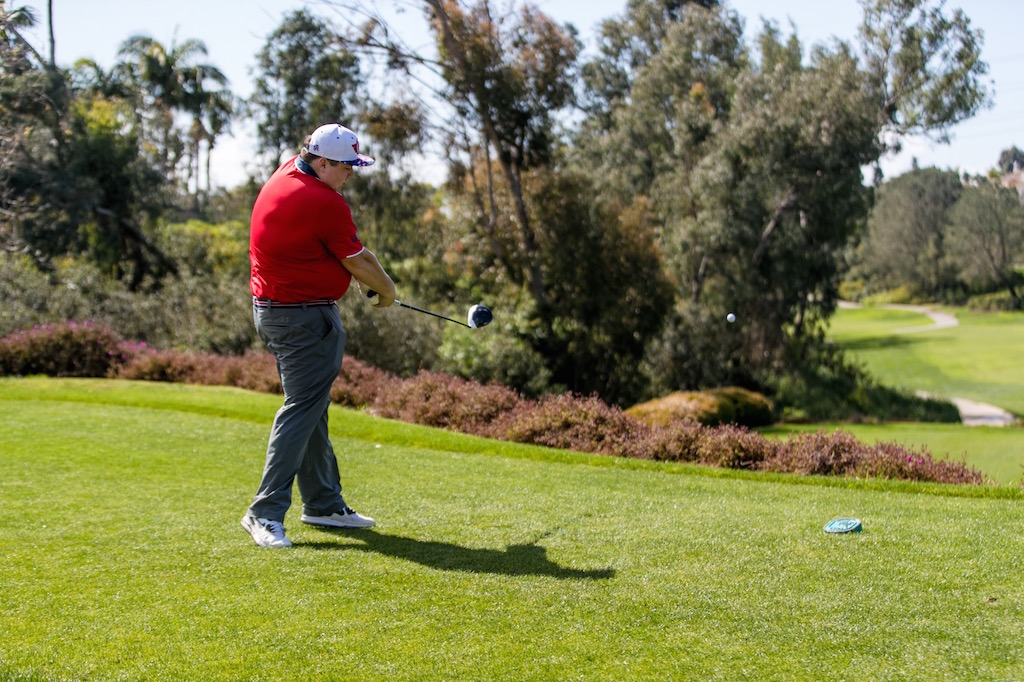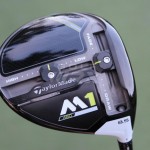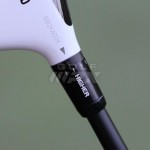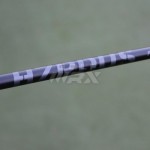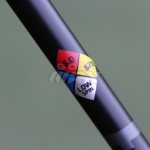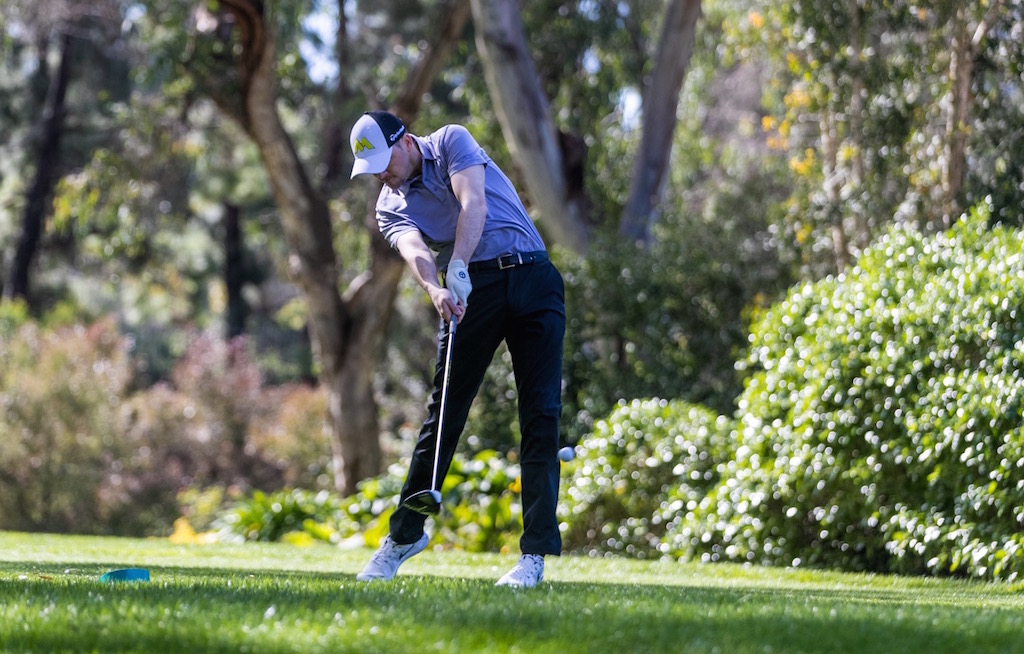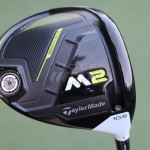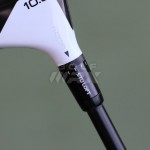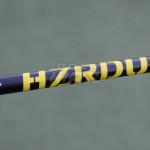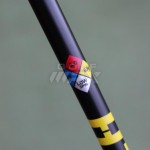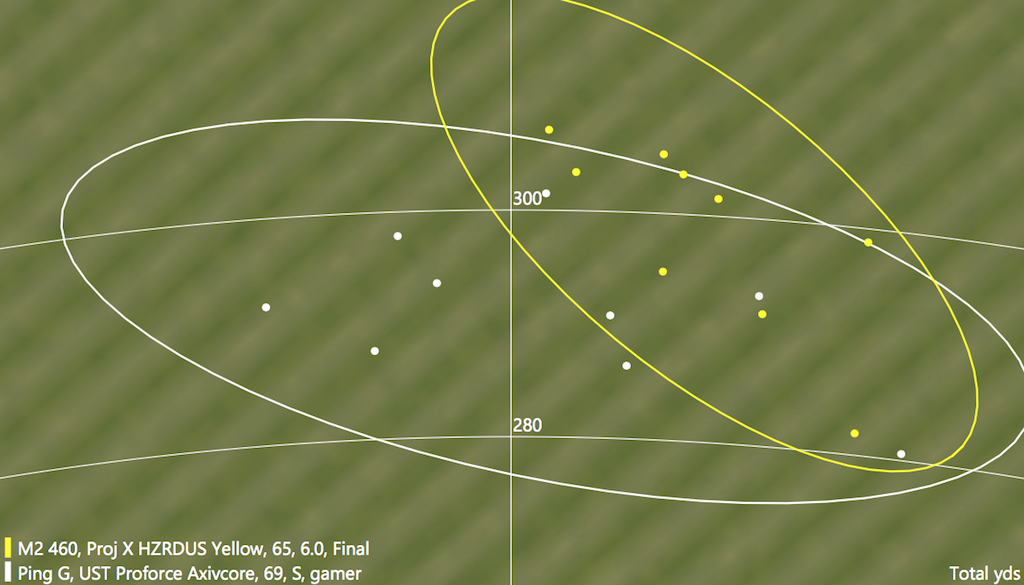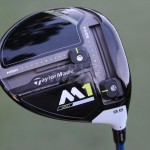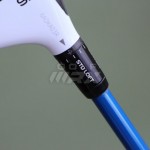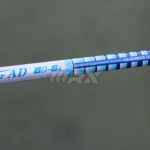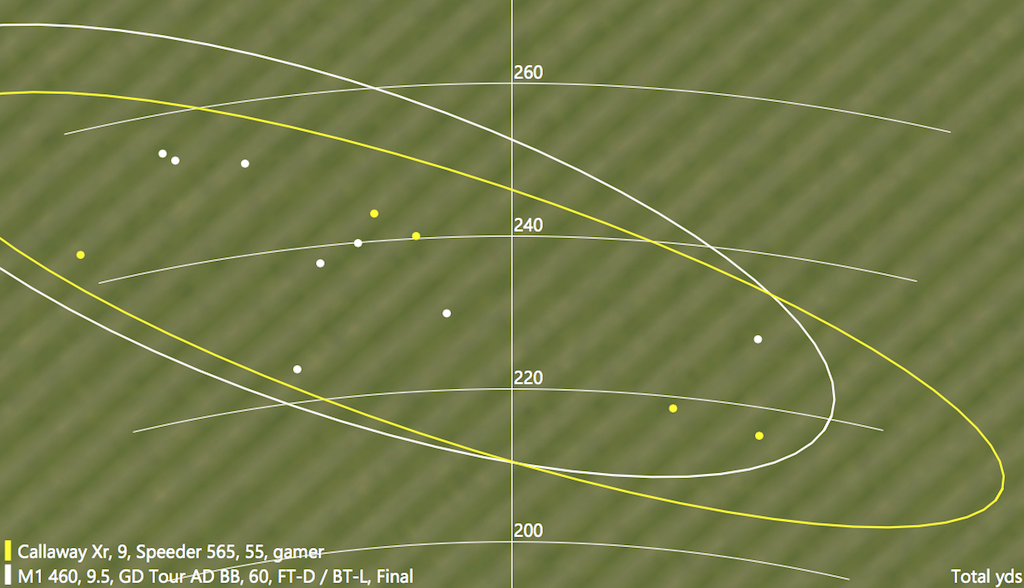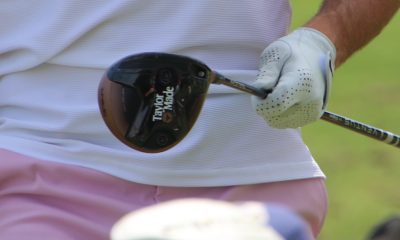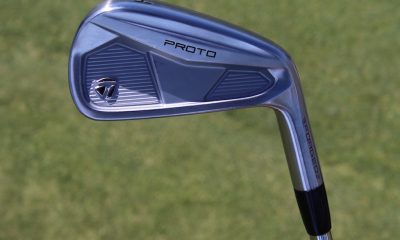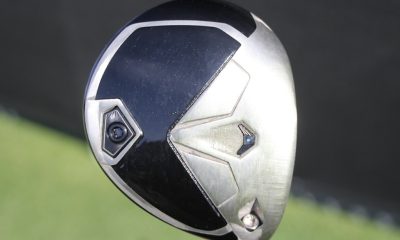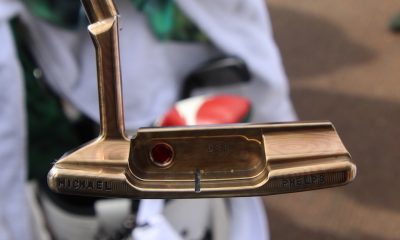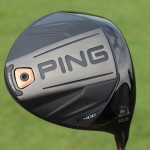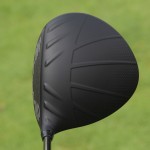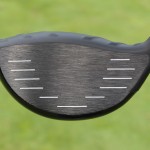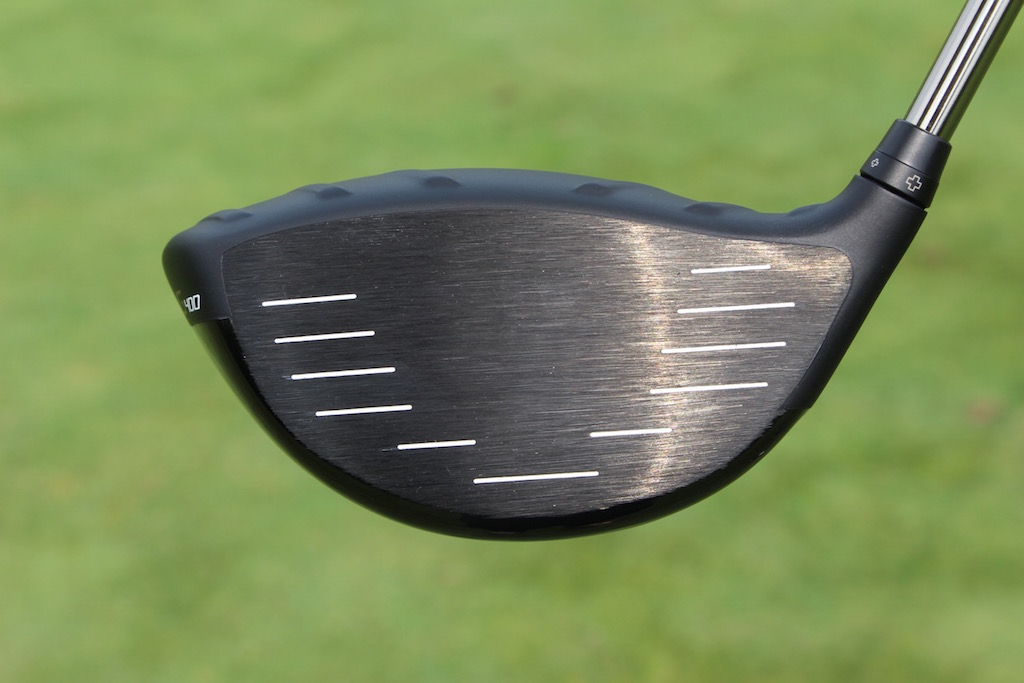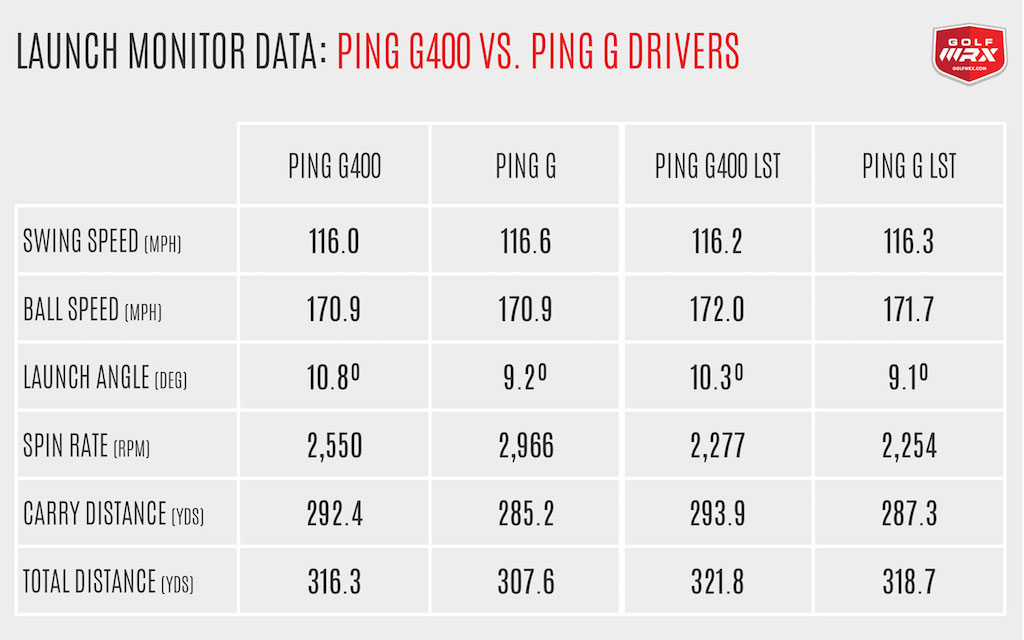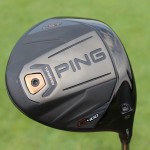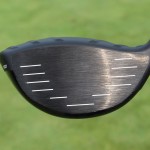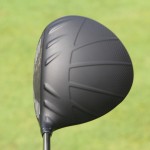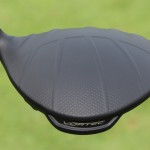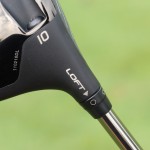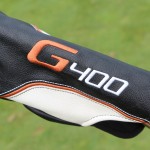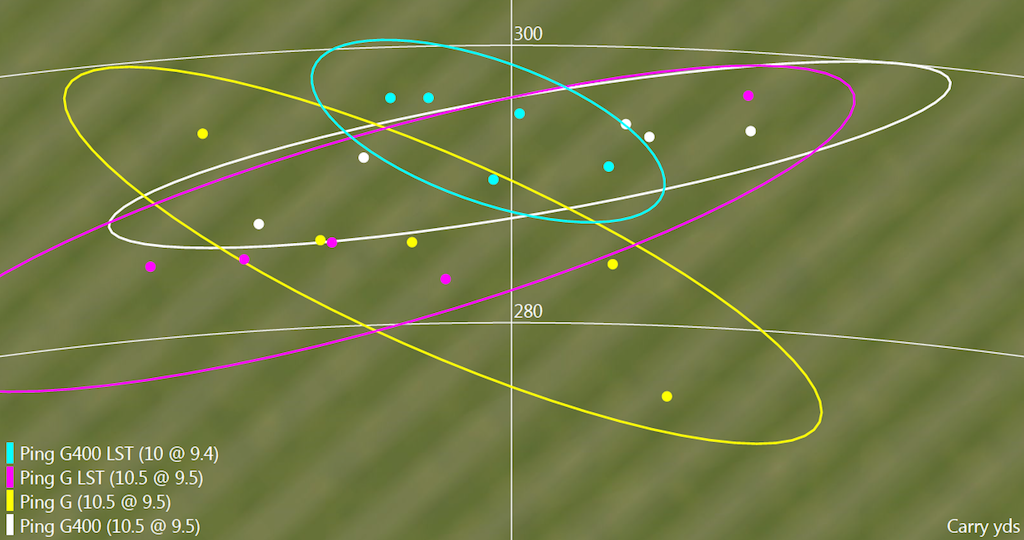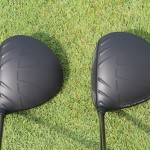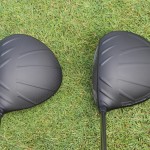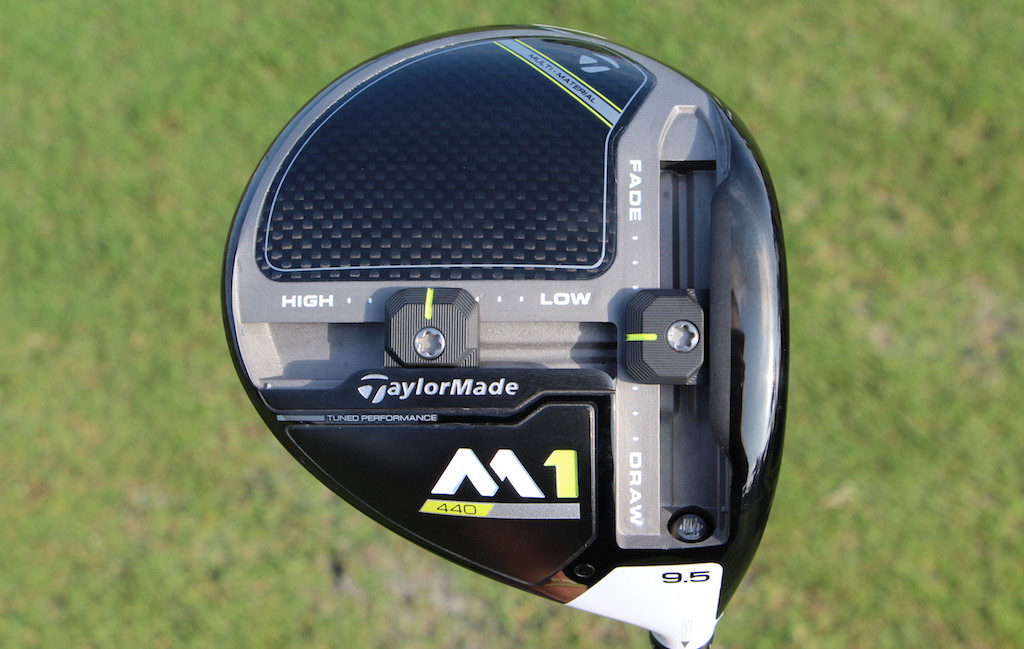Driver Reviews
GolfWRX Members Gain 7 Yards on Average with 2017 TaylorMade M1, M2 Drivers
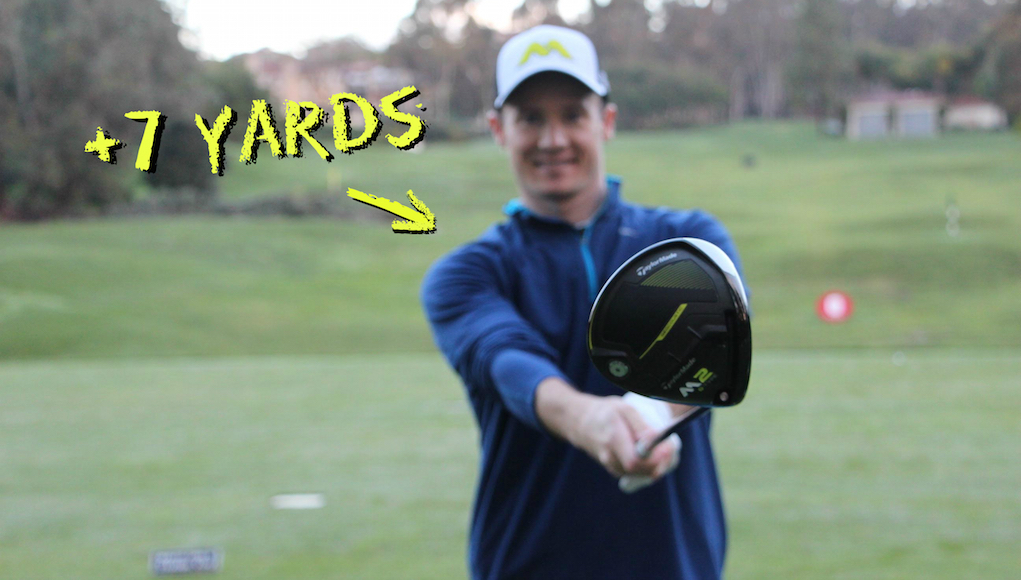
5 GolfWRX Members
Gamer vs. 2017 TaylorMade m1/m2 Drivers
+7.01 Yards Distance Gained on Average
-615 RPM Spin reduction on Average
What can the new 2017 TaylorMade M1 and M2 drivers do for your game?
Five GolfWRX Members found out last week when they pitted their drivers against TaylorMade’s latest models at The Kingdom, the custom-fitting facility at TaylorMade’s headquarters in Carlsbad, Calif.
The event was the first of #TaylorMadeTuesdays, a series of TaylorMade-sponsored events that are exclusive to GolfWRX Members. The five members received Trackman 4 fittings for their drivers, which were built immediately afterward so that they could test the clubs the next day at Aviara Golf Club, home course of the LPGA Tour’s Kia Classic.
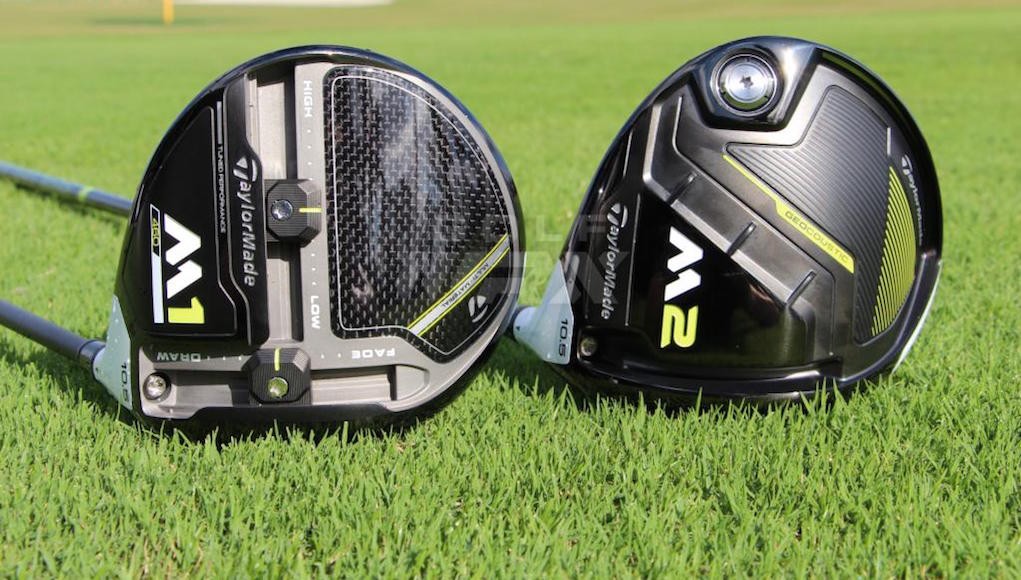
Our editorial team was present to observe and document the fittings, where they saw the five GolfWRX Members add an average of +7.01 yards to their drives with a new TaylorMade driver. Key to the success of TaylorMade’s 2017 M1 and M2 drivers was their ability to remove excess spin from the drives of each GolfWRX Member (-615 rpm on average). As a result, each player was hitting longer drives on their best shots, while achieving a straighter ball flight that was less affected by wind.
Every GolfWRX Member gained yardage with a new TaylorMade driver; the largest distance gain was an impressive +10.1 yards, while the smallest was a very respectable +4.8 yards.
Our testers were better players, but they covered a range of handicaps (+1 to 7.1) and swing speeds (95 to 117.5 mph) within the better-player category. Learn more about the five GolfWRX Members, their new drivers and their experiences in our individual recaps below.
Andrew Harveson (drewtaylor21)
- Distance Gained: 4.8 yards
- Handicap: +1
- Swing Speed: 117.5 mph
New Driver: M2 D-Type (9.5 degrees, set to 9 degrees)
Shaft: UST Mamiya Elements Prototype PT6F5 (65X)
Old Driver: TaylorMade SLDR (9.5 degrees)
Shaft: UST Mamiya ProForce VTS 6X Silver
Andrew Harveson brought a TaylorMade SLDR (10.5 degrees) driver with him to his fitting, which was already optimized for his game. He fits into a group of golfers who are often hard pressed to see distance gains from new clubs. The former college golfer, now 34, has an ability to consistently contact drives in the center of the club face. He also has an upward angle of attack with his driver (+3 degrees on average) that helps him maximize the distance of his drives.
Nonetheless, TaylorMade’s fitters helped Andrew find an average of +4.8 yards with a new TaylorMade driver, but it took some experimentation and outside-the-box thinking.
Andrew’s SLDR driver was set to a neutral loft and lie setting, but to combat his tendency to hit shots that slid to the right his SLDR’s front weight track was shifted to the max draw setting. According to TaylorMade fitter Jason Werner, the SLDR is a more draw-biased driver company’s current M1 460, M1 440 and M2 models. After seeing the ball fade too much with those drivers, Jason had Andrew try the company’s M2 D-Type driver (9.5 degrees), which is designed with more draw bias to help golfers eliminate excessive left-to-right curvature.
Andrew’s Dispersion Chart
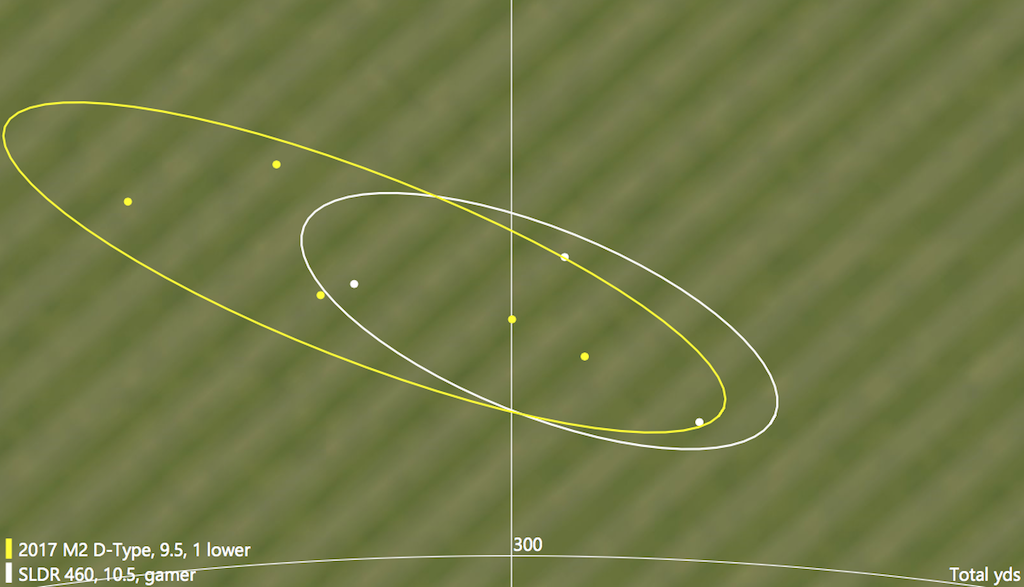
Andrew achieved slightly more left bias with the 2017 M2 D-Type, which was what he wanted for his tee game.
The M2 D-Type gave Andrew the confidence to play his preferred cut shot off the tee without fear that it would drift into the right rough. Actually, it created a bit too much draw bias for him, which is why the loft setting was lowered 1-click to 9 degrees. The change helped him lower his spin rate -553 rpm on average, while also opening the club face slightly to take the left side out of play.
“While the averages don’t really look better with the D-Type compared to SLDR, I had a few mishits in the D-Type grouping that, if removed, would have shown a more accurate picture of the results,” Andrew wrote in the forums.
The last piece of the puzzle for Andrew’s fitting was finding the correct shaft. He tried several low-launching shafts that proved to have too little torque for his swing, exacerbating his rightward miss. He ended up seeing the best performance from his gamer shaft, UST Mamiya’s ProForce VTS Silver 6X, which has a mid-torque design. TaylorMade’s Tour Department also provided him with a similar alternative that they thought he might like, UST’s Elements Prototype PT6F5 (65X), which proved to be a winner on the course the next day.
“[TaylorMade] gave me the newer [better] UST Elements Chrome Platinum Prototype PT6F5!” he wrote. “Supposed to be a very similar profile to the [Aldila] Rogue [Silver] 125. I was a bit anxious to see if it would hold up as the right fit, but after just a couple swings on the range at Aviara, I was convinced! It’s a bomber.”
With the M2 D-Type, Andrew’s good shots got better. His peak ball speed went from 175 mph with his SLDR to 178 with the M2 D-Type, enhancing his distance potential. He was also seeing a lower ball height from the new driver — his peak height was reduced from 135 feet to 122 feet — that he “really liked.”
“It was a bit amusing though, everyone at [TaylorMade] seemed shocked that I got put into the D-Type,” he wrote.
You wouldn’t expect the fastest swinger and most accomplished player in the group to be a fit for TaylorMade’s most draw-biased driver, as the model is generally reserved for slower swingers. As a traveling +1 handicap, however, Andrew’s needs were very specific and met perfectly by the 2017 M2 D-Type.
In Their Own Words: See what Andrew said about his experience.
Brian Ussery (BCULAW)
- Distance Gained: 5.5 yards
- Handicap: 6
- Swing Speed: 106 mph
New Driver: TaylorMade M1 460 (10.5 degrees)
Shaft: Graphite Design Tour AD-DI 6X
Old Driver: Titleist 915D2 (9.5 degrees)
Shaft: Aldila Rogue Black 60S
Brian Ussery arrived at The Kingdom with a Titleist 915D2 (9.5 degrees) driver that he knew wasn’t right for him. The 43-year-old was aware of the fact that his low-launching, high-spinning drives were costing him distance, but he wasn’t sure how to improve.
As it goes in a lot of fittings, Brian didn’t swing as well as he wanted to at The Kingdom, but his outlook on the game of golf allowed the fitting to be a success. “Golf is my therapy and my chance to find peace, quiet, time away and fun,” he wrote in the forum. Spending time with the former minor league baseball player who’s now a lawyer, his commitment to improving his game was immediately apparent. On this day, getting better required patience with his swing and an open mind to the recommendations of his fitters. He was up to the task, and in the end he was rewarded with a new solution for his tee game.
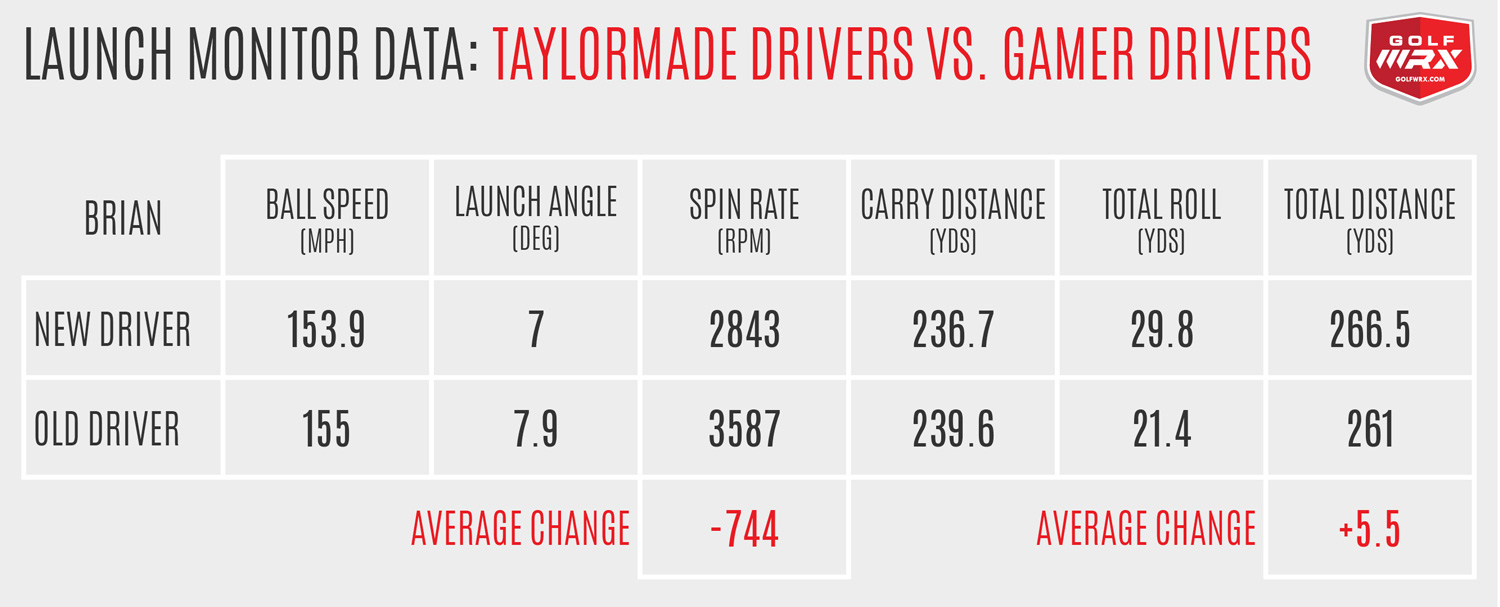
The TaylorMade fitters started Brian with an M2 D-Type (9.5 degrees) driver, but he struggled to hit it high enough to be effective. He found much more success with an M1 460 that had more loft (10.5 degrees). Excessive spin was still an issue, however, especially with the added loft, but the M1 460 had a solution. By sliding the driver’s Back Track weight all the way to the front of the driver, he achieved a lower-spinning trajectory that not only allowed him to hit straighter drives but achieve more roll-out, too. It helped negate his negative angle of attack of -4.5 degrees, which was the main culprit for his low-launching, high-spinning trajectory.
It was at this point in the fitting that Brian had to make a decision. Did he want to continue to chase more distance or did he want a driver that would help him hit more fairways? With his busy work and family schedule, he’s only able to play nine holes of golf per week. That made the choice obvious; he was going to target consistency.
The TaylorMade fitters recommended Brian try a shorter driver. His 915D2 measured 45.25 inches on TaylorMade’s ruler, and he was advised to try a driver that measured 44.75 inches. With the shorter driver his consistency was immediately improved, and it was time to dial in the right shaft.
Brian’s Dispersion Chart
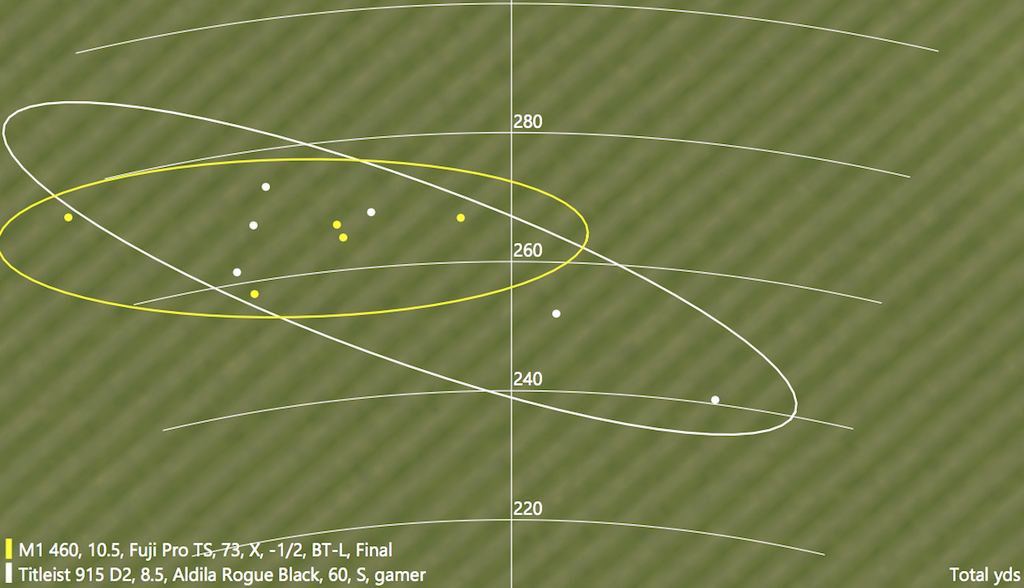
Brian hit most of his shots with Fujikura’s Pro Tour Spec 73X shaft, which produced good results, but in the end he made the decision to go with Graphite Design’s Tour AD-DI 6X. It provided the stiffness he needed for straighter drives, but offered a smoother feel (Note: since Brian hit limited shots with the AD-DI 6X, the data displayed in the chart above shows his performance with the Fujikura shaft). His fitter, Jason Werner, supported his shaft decision. And as Brian put it: “Based on my on-course play … it would seem he is pretty spot on.”
With the M1 460, Brian saw an additional 5.5 yards of total distance over his gamer, but more important to him was the increased accuracy. Even at a higher loft, he was able to reduce his spin rate an average of -744 rpm. So now when his drives hit the fairway, they will keep rolling. And Brian expects to be hitting a lot more fairways.
In Their Own Words: See what Brian said about his experience.
Chris Scheeweiss (Schnee)
- Distance Gained: 10.1 yards
- Handicap: 3
- Swing Speed: 112 mph
New Driver: TaylorMade M1 460 (8.5 degrees, set to 10.5 degrees)
Shaft: Project X HZRDUS Black 65 (6.0 flex)
Old Driver: TaylorMade SLDR (10.5 degrees)
Shaft: Aldila Tour Blue 75TX
Chris Scheeweiss was the biggest gainer of the five GolfWRX Members, finding +10.1 yards on average when compared to the TaylorMade SLDR (10.5 degrees) driver he brought with him to the Kingdom.
Key to Chris’ success, a 3-handicap with ample club head speed (112 mph), was reducing the spin caused by his big miss, which was high and to the right. While that isn’t Chris’ typical miss, it’s what showed up at the Kingdom. TaylorMade’s M1 460 proved that he could handle that miss, as well as any other miss he might encounter on his journey to improve his game thanks to its wide-ranging adjustability features.
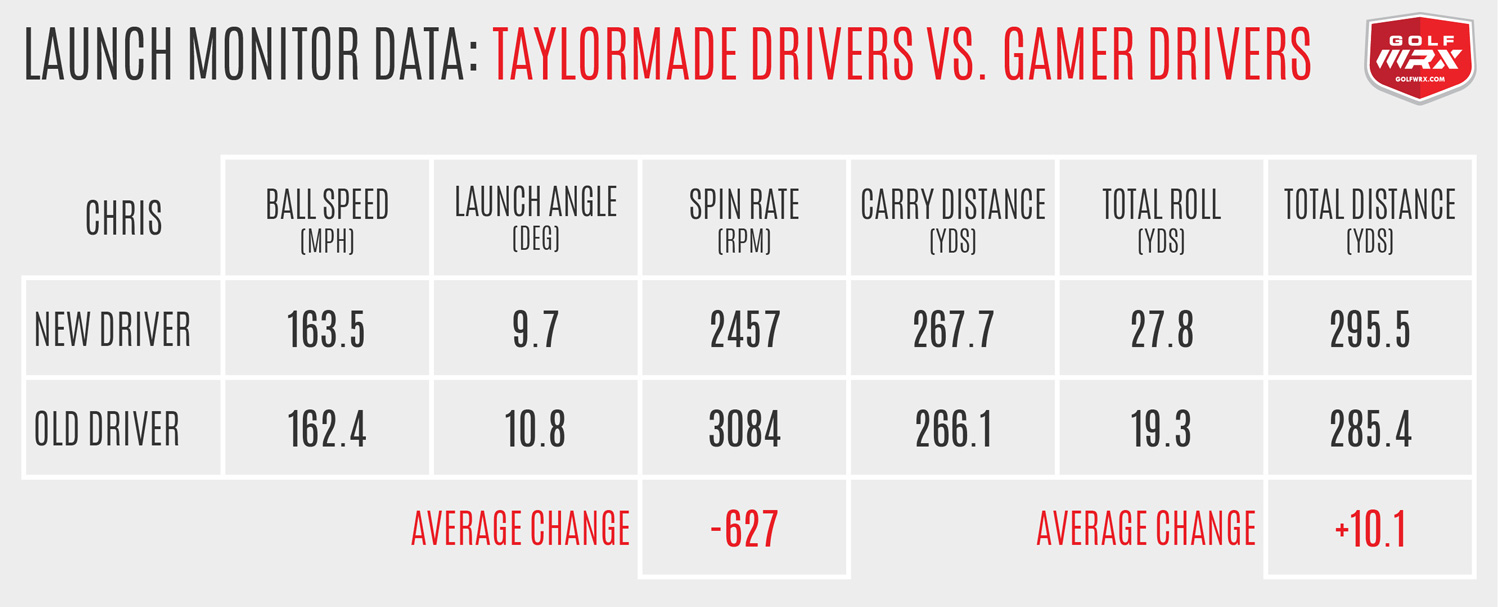
During the fitting, the M1 460 scrubbed -627 rpm of spin off Chris’ drives. To do so, TaylorMade Fitter Jason Werner gave Chris a 8.5-degree M1 460, but he increased the loft of the driver to 10.5 degrees, maximizing the full range of TaylorMade’s 4-degree Loft Sleeve. Adding two degrees of loft closed the club face, which helped eliminate Chris’ slice spin.
Jason made the adjustment without telling Chris, however, and he was glad when Chris said he didn’t notice the change at address.
The reason Chris didn’t notice the more closed club face? The crowns of TaylorMade’s 2017 drivers are engineered to look as square as possible at address regardless of what setting is used due to their cleverly designed black-and-white graphics. Chris had recently been fit at a local club fitter for a 2017 M2 driver (10.5 degrees), but this setup was “much better than the combo I was previously fit for,” Chris wrote in the forum.
Finding the right shaft was a faster process that Chris expected. Project X’s HZRDUS Black 65 (6.0 flex) offered him the lower trajectory and added stability he needed to hit his best drives.
Chris’ Dispersion Chart
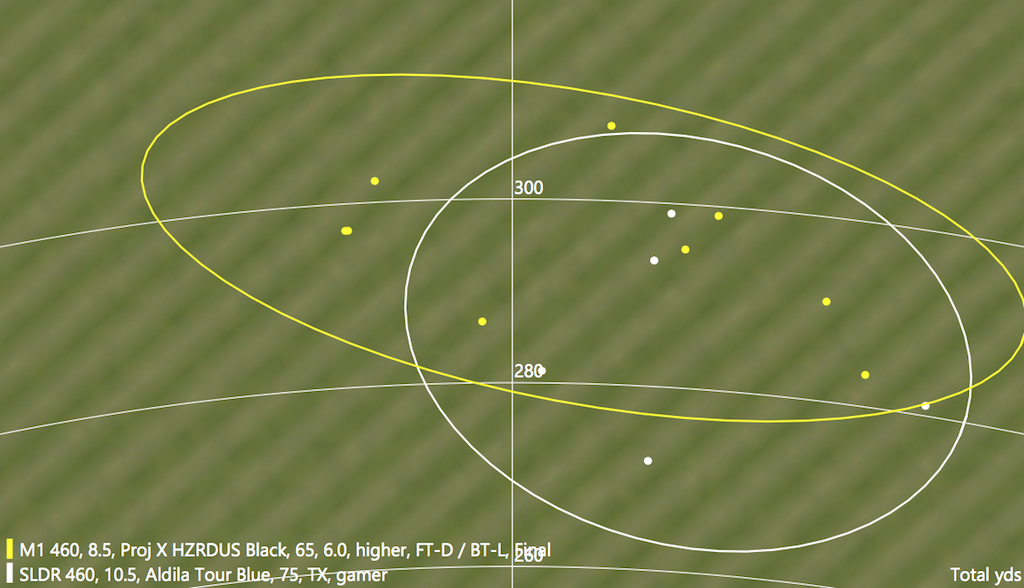
“Jason … didn’t think we had to go much further,” Chris wrote in the forum. “I wasn’t completely sold on the combo, but I deferred to his knowledge. It wasn’t that I didn’t trust the combo itself, it’s that I wasn’t hitting ANYTHING all that well, so I didn’t know how it would perform on course when my swing was better. I’m glad I trusted him, because it was AMAZING on course.”
As Chris works to eliminate the right tendency in his swing, Jason recommended that he try lowering the loft of the driver, which will open to face to reduce left bias. They agreed that at some point in the future Chris may be able to return to the 8.5-degree loft setting, which could net him even more distance. And if he needs more spin to optimize his launch conditions at that point, he can gradually slide the Back Track’s weight rearward to achieve it.
In Their Own Words: See what Chris said about his experience.
Darrin Sloan (DNice26)
- Distance Gained: 7.1 yards
- Handicap: 1
- Swing Speed: 110 mph
New Driver: TaylorMade M2 (10.5 degrees)
Shaft: Project X HZRDUS Yellow 65 (6.0 flex)
Old Driver: Ping G (10.5)
Shaft: UST Mamiya ProForce AvixCore 69 Red (Tour-S flex)
Darrin Sloan, 36, knew exactly what he wanted from a new driver. He arrived at his fitting with a Ping G (10.5 degrees) that was giving him the height he wanted, but he was looking for a straighter ball flight.
The 1-handicap, former college golfer started his fitting with a TaylorMade M2 (10.5 degrees) with a Project X HZRDUS Black 65 (6.0 flex), a combo that significantly lowered his launch angle and spin rate. While it was giving him more distance, the ball flight was too low for his needs despite his 110 mph swing speed and average angle of attack of +2 degrees.
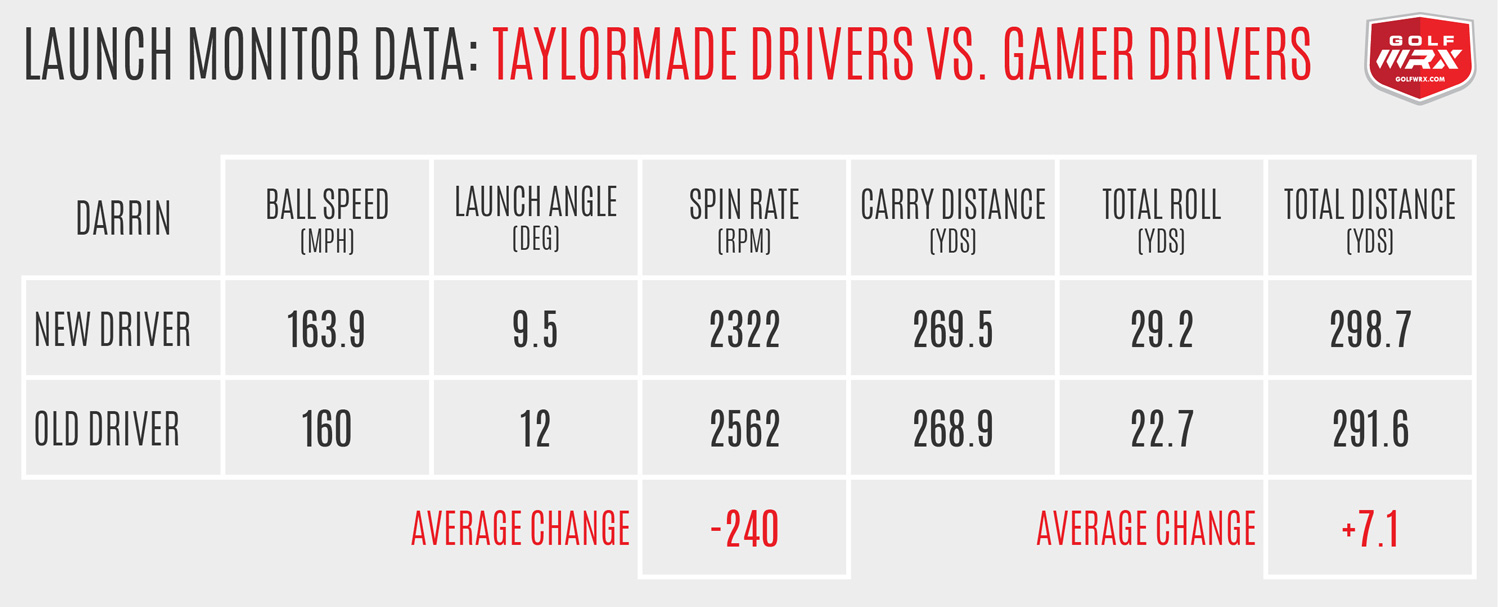
Darrin told TaylorMade Fitter Jason Werner he needed a higher ball flight to cut the corners of the doglegs at his home course, where he plays 95 percent of his golf. So the two starting experimenting with different heads and different shafts in search of a more familiar trajectory, as well as more distance.
He actually preferred liked the look and the feel of TaylorMade’s M1 460 driver, but there was no denying the performance of the M2. It offered him nearly +4 mph of ball speed on average over his gamer, an incredible improvement.
Once the M2 (10.5 degrees) was linked up with a Project X HZRDUS Yellow 65 (6.0 flex) shaft, it was clear Darrin had a winner. The counter-balanced shaft helped him launch his drives higher, giving him the trajectory he needed to tackle his home course. It also helped him eliminate his miss to the right and easily execute his preferred right-to-left ball flight.
In terms of distance, Darrin was also able to sightly increase his carry distance (+0.6 yards) while significantly increasing his roll out (+6.5 yards). His total yardage gain with the new driver was +7.1 yards.
Darren’s Dispersion Chart
The takeaway for GolfWRXers is that TaylorMade’s new M2 driver can offer more ball speed than the company’s M1 driver for certain players. And if you’re struggling with either a ball flight that’s too low or a rightward miss, a counter-balanced shaft like Project X’s HZRDUS Yellow can help.
In Their Own Words: See what Darrin said about his experience.
George Cellette (GC70)
- Distance Gained: 7.6 yards
- Handicap: 7.1
- Swing Speed: 95 mph
New Driver: TaylorMade M1 460 (9.5 degrees)
Shaft: Graphite Design Tour AD-BB 6S
Old Driver: Callaway XR (9 degrees)
Shaft: Fujkura Speeder Evolution 565 (S-Flex)
Like a diesel engine, George needed some time to warm up during his fitting. But once he did, he began pounding drives down the left center of The Kingdom’s range.
At first, it looked as though George might post a ridiculous distance gain with a TaylorMade M1 460. He increased his distance more than 30 yards over the Callaway XR ’16 he hit at the beginning of the fitting. As he and TaylorMade Fitter Jason Werner dialed in the loft, shaft and CG setting, however, Jason noticed that George’s swing speed had jumped nearly 10 mph from 85 mph to 95 mph since he first started hitting balls. He asked George to retest his Callaway to make sure that the final data would reflect a fair comparison of his old and new drivers.
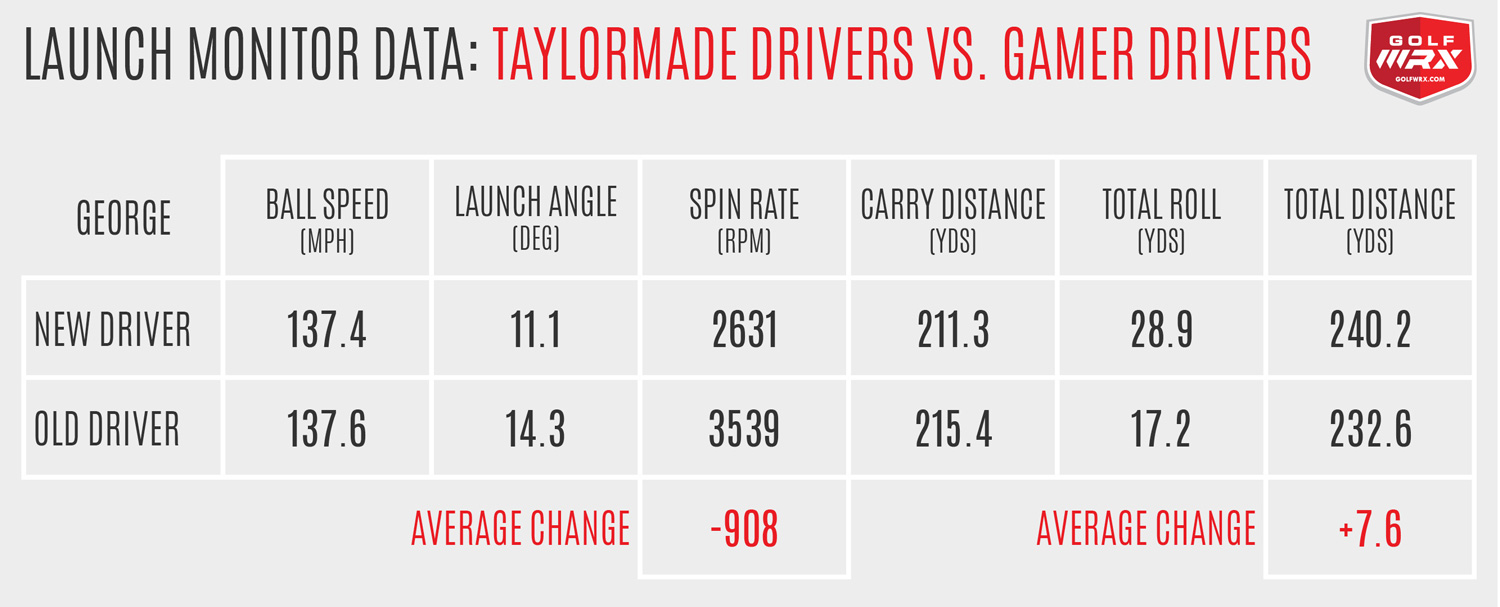
The result was a smaller average distance gain with his new TaylorMade, but still an impressive one.
George first tested TaylorMade’s M1 460 with 8.5 degrees of loft, but because George was fighting a slice he closed the face to 10.5 degrees to create a left bias. As George loosened up, however, his slice turned into a gentle fade. For that reason, he switched George from the 8.5-degree head to a 9.5-degree head in a neutral setting.
While George’s warmed-up swing was the biggest contributor to the improved trajectory, a new shaft and weight setting also helped. At first Jason gave George a Project X HZRDUS Black 65 (6.0 flex) shaft, a low-launch shaft with ample stability to help him reduce spin. It would have been a good combo, but George wanted to test a few more shafts to see if there was more distance available to him. The winning shaft ended up being Graphite Design’s Tour AD-BB 6S, which gave George an even lower-spinning trajectory.
The adjustable weight settings of the M1 460 further optimized George’s ball flight. Since he already had enough height on his drives, Jason was able to slide the M1 460’s Back Track weight all the way forward to decrease spin. He also slid the driver’s Front Track weight all the way to the heel to maximize draw bias. The two changes had George hitting high-launching, low-spinning bombs that barely had any curvature.
George’s Dispersion Chart
When all was said and done, George was able to scrub an incredible -908 rpm of spin off his drives. And along with his straighter trajectory, he walked away with +7.6 yards of added distance.
In Their Own Words: See what George said about his experience.
- LIKE117
- LEGIT20
- WOW12
- LOL8
- IDHT1
- FLOP6
- OB5
- SHANK162
Driver Reviews
GolfWRX Spotlight: Tour Edge Exotics C721 driver

Tour Edge’s Exotics line of high-end golf clubs has been known for excellent fairway wood and hybrid performance over the years. The Chicago-based company has been consistently putting out high-quality products, and golfers are really taking notice. The new line of C721 drivers, fairway woods, and hybrids take yet another big leap forward from last year’s EXS line.
The new C721 driver takes a lot of technology from the 2020 EXS line and further refines and expands on it. I know it is a little cliche when companies say every model is their best ever, but Tour Edge is 100 percent right this time.
When unboxing the C721 the first thing I noticed was the much-improved looks and shape over the previous Tour Edge drivers. The biggest change to my eye is the added bulge, giving a more rounded and softened topline.
The overall shape of the C721 is slightly stretched from front to back, giving it just a hint of a triangular look. The Ridgeback is a titanium spine flanked by two carbon fiber wings that add stability and forgiveness to the head, but they can also work together and an additional aiming device to ensure you are lined up down the center of the fairway.
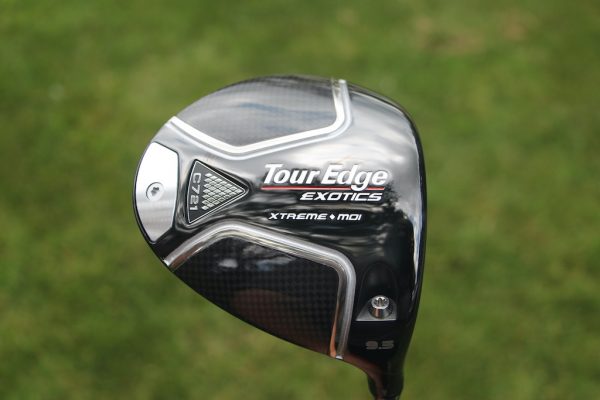
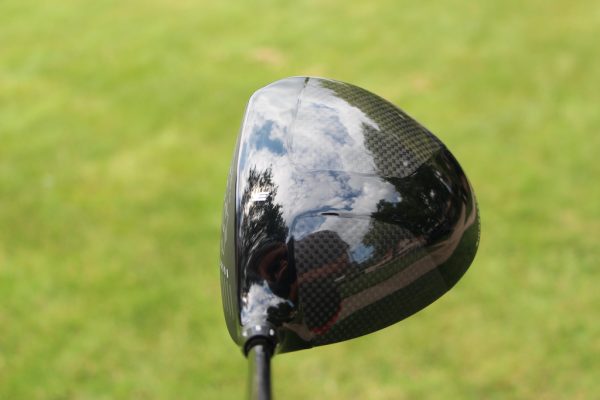
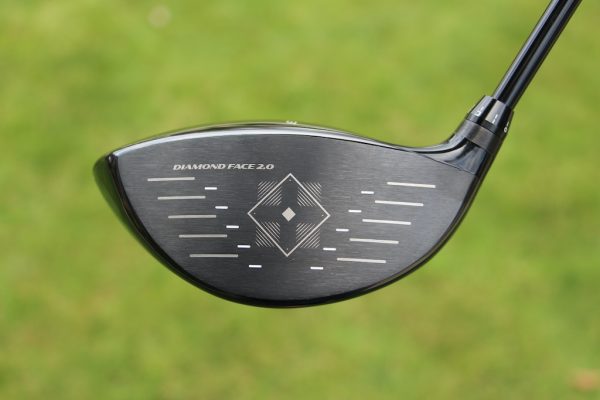
Getting the C721 out on the course is where you really start to appreciate all the technology that went into this driver. Well-struck shots are very long, very boring, and will hang with anything out on the market today. Center contact is rewarded with a long and very low spin shot that is just fun to hit.
The sound and feel are very solid, you can really feel the ball compress on the face as it leaves at high speed. The sound is more of a muted crack and much quieter than I anticipated. If you practice on an enclosed range your ears will thank you for your choice in drivers. Shots hit away from the center of the face retain a lot of ball speed and stay online really well.
My miss is low on the heel and those misses stayed in the air fairly well and went a good ways. Shots hit down on the heel or higher on the toe side still stay online really well due to the Ridgeback spine and rear weight. The C721 is just slightly higher than mid-launch for me, but the low spinning head never allowed my shots to balloon or rise even into the wind. I do wish the face was just a touch deeper as I had to play with my tee height in order to find the optimal setup. The better players will enjoy the neutral weighting and there seems to be very minimal draw built into the driver.
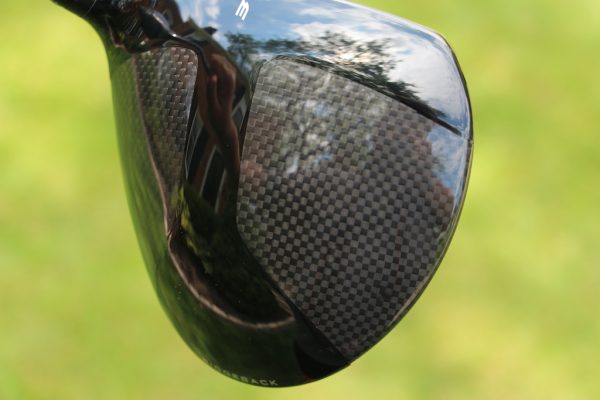
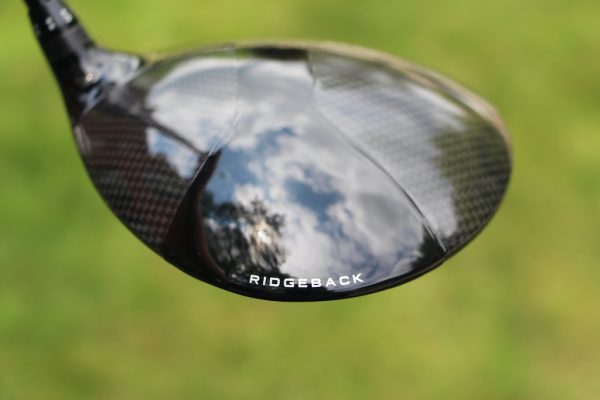
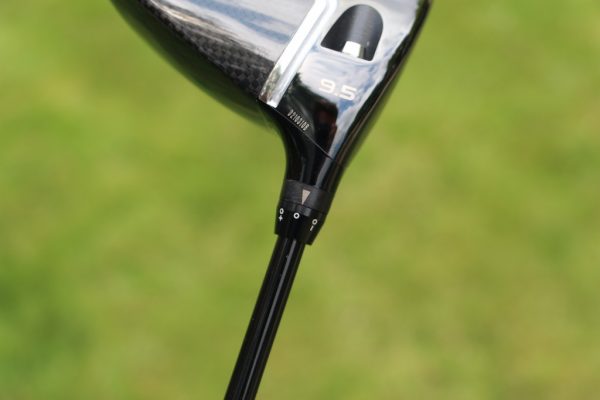
Overall, the Tour Edge Exotics C721 driver is a great club that will probably be overlooked by too many golfers. If you are looking for added distance, a lot of forgiveness and want to keep some money in your pocket, then you should seriously take a look at Tour Edge.
- LIKE103
- LEGIT12
- WOW6
- LOL2
- IDHT1
- FLOP1
- OB2
- SHANK5
Driver Reviews
Review: Ping’s G400 and G400 LST Drivers
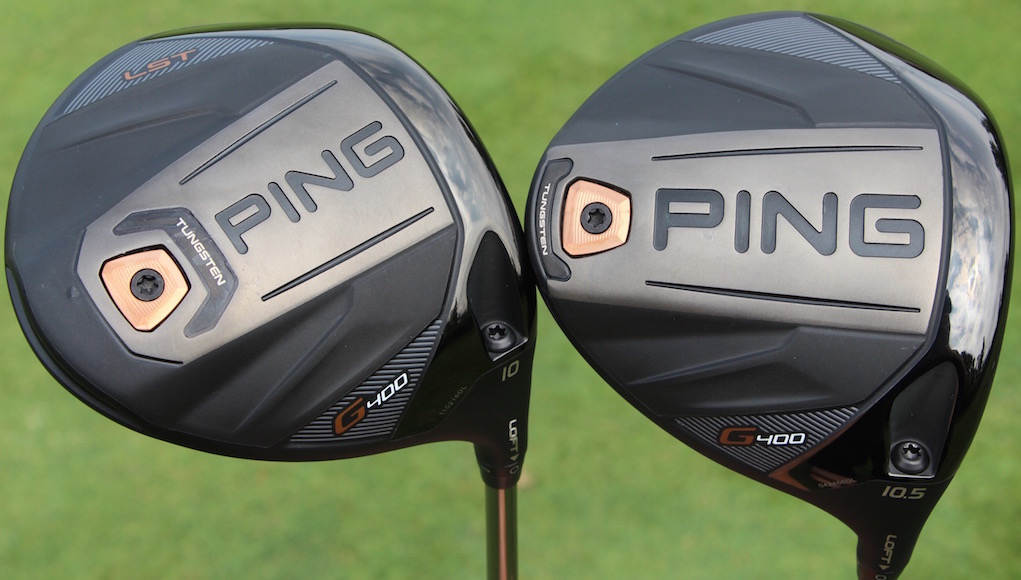
I still remember the first time I hit Ping’s G30 driver. It was July 2014, and I was at Ping’s HQ in Phoenix. Super low-spin drivers were all the rage at the time. With their forward center of gravity, they were helping golfers optimize their launch conditions beyond their wildest dreams: crazy high launch, ridiculously low spin. Many in the business, including myself, had one of these drivers and spent many launch monitor sessions trying to figure out how to get more distance from these high knuckleballs. The bad news was that forward-CG drivers, by nature, were really unforgiving. Bad shots were really short and crooked.
Before I knew the G30 was a big deal, Marty Jertson, Ping’s Director of Product Development, explained to me his vision for the perfect driver inside a conference room at Ping Headquarters. In his eyes, the perfect driver didn’t have the low, forward center of gravity (CG) that was being touted at the time. Its CG was located as low and as rearward in the driver head as possible, which he said would offer the best of both worlds: optimized launch conditions on good shots, as well as the best possible forgiveness on bad shots.
Building the perfect driver was a long way off (and still is), but Jertson was excited where Ping had landed with the G30. When it was released, the driver was a powerful testament to his vision. Its rear-CG design created great distance on good and bad shots, and it was also a very straight driver. The G30 sold incredibly well and, as a result, the industry mostly shifted away from forward-CG drivers.
It’s been nearly three years since the release of the G30, and Ping has just made another counterintuitive driver release. The company shrunk the size of its new G400 drivers in a climate where full-size drivers have become the norm. Granted, it’s only 15 cubic centimeters smaller, but it’s noticeable at address. Compared to the Ping G drivers they replace (which replaced the G30), the G400’s look like they cut carbs.
Despite their slimmer frames, however, the G400 drivers are actually more forgiving than the G drivers (which were even more forgiving than the G30). That’s why Ping representatives say smaller is actually better in the G400’s case. The drivers have the lowest, most rearward CG of any Ping drivers ever, and their smaller size is said to improve their aerodynamics so golfers can swing them fractionally faster. The other big change is a new face material made of T9S+ titanium, which is thinner and more flexible to help golfers generate more ball speed.
For this review, I wanted to put the G400 and G400 LST to the test against the G and the G LST drivers that they replace, so I took them to the Launch Pad at Carl’s Golfland in Bloomfield Hills, Mich. I hit five shots with each driver on Trackman IV, and to ensure as much of an apples-to-apples comparison as possible, I tested each driver head with the same shaft. Each driver head was adjusted to the same loft, or as close as possible.
Note: The G, G LST, and G400 drivers I tested were 10.5-degree heads adjusted to 9.5 degrees. The G400 LST had a loft of 10 degrees, and it was adjusted to 9.4 degrees.
The Test
In my personal driver tests, I don’t usually see a huge uptick in distance or accuracy when comparing the latest drivers to the most recent models from the same manufacturer. Improvements generally come in the form of improved head shaping, a better feel, or enhanced adjustability. That’s why I was surprised to see such a big change in my launch conditions and dispersion with the G400 drivers.
G400 Test Results: With the G400, I launched my drives an average of 1.6-degrees higher than I did with the G while dropping spin an average of 416 rpm. That led to a significant improvement in distance. With my swing speed and ball speed staying about the same, I added an average of 7.2 yards more carry distance and 8.7 yards more total distance.
G400 LST Test Results: First, a note about the G400 LST. It has a CG that’s slightly lower and more forward than the standard G400 driver to help golfers reduce spin. Like the G30 LST and G LST, it’s still very much a rear-CG driver, but its design helps high-speed golfers who can consistently find the center of the club face maximize distance without highjacking forgiveness. When I test Ping drivers, the LST is generally the model that creates the best performance, and the G400 LST was no exception. I saw an average of a 1.2-degree higher launch angle with all other things staying about the same when I compared it to the G LST. The result was an average of 6.6 yards more carry distance and 3.1 yards more total distance. It was the longest and straightest driver I hit in the test.
Note: Ping also sells a G400 SFT (Straight Flight Technology) driver, which has added draw bias. To learn more about it, click through to tech story on the G400, G400 LST and G400 SFT drivers.
Dispersion
One way to explain the improved launch conditions is that I hit the G400 drivers more consistently. As you can see in the Trackman dispersion chart, I hit the G400 and G400 LST drivers straighter on average than the G and G LST. Is that its slightly enhanced forgiveness shining through? Maybe, maybe not.
To me, the changes Ping made to the look and feel of the driver were just as important as the performance difference I saw on Trackman. I’ve always preferred smaller driver heads, or at least 460-cubic-centimeter drivers that appear smaller than their size. For that reason, I felt more confident with the G400 drivers in my hands. I didn’t mind that I didn’t see any added swing speed or ball speed from the smaller driver head. I was sold on the looks alone.
- At Address: Ping’s G400 (left) and G drivers.
- At Address: Ping’s G400 (left) and G drivers.
I also preferred the sound of the G400 drivers to the G drivers. There was definitely much more of a “thwack” than a “ping” at impact, which made the G400’s feel more powerful. Looks and feel are subjective, of course, but to me the improvement was night and day. I don’t think it’s a stretch to say that my fondness for the looks and feel of the G400 was at least a contributing factor to my improved performance in the test, if not the most important factor. When I like the way a club look at address, I tend to hit it better, and I know I’m not alone.
I do want readers to keep in mind that this was a one-person test and I hit a limited amount of balls. Yes, it’s a great indication that the G400 driver can be measurably better than a G driver, but it’s not a guarantee.
I also want to address the weaknesses of the G400 drivers. While they’re few, they could push golfers into another driver model in a fitting. Unlike Callaway’s GBB Epic, TaylorMade’s M1 or Titleist’s 917 drivers, the G400’s don’t have CG adjustability. That means there’s no way to fine tune ball flight outside of a shaft or loft adjustment. A bigger deal for some golfers might be the G400 crowns. Despite their smaller size, there’s still a lot to look at address, as was the case with the G drivers.
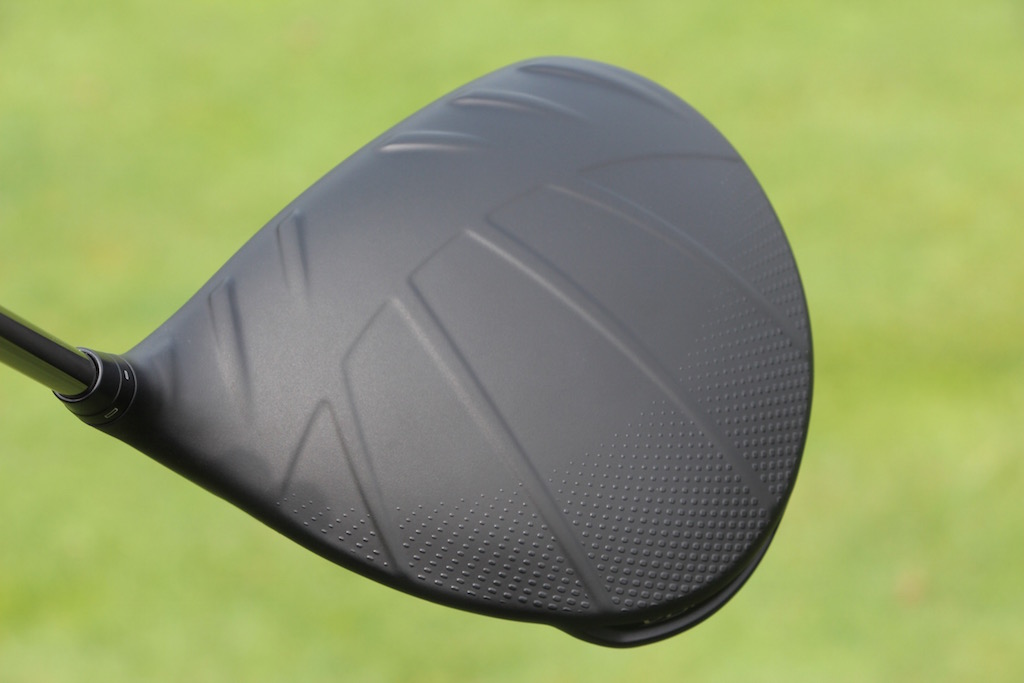
Aerodynamic features on the front of the crowns, “Turbulators,” have been thickened for the G400 release. There’s also Ping’s “DragonFly Technology,” a geometry on the back of the driver crowns that helps push CG lower and more rearward in the driver heads. I personally think the G400 crowns give the drivers an old-school, muscle car-like look, but there’s no question they won’t fly with all golfers.
Whatever your thoughts about what’s on top of the G400 drivers, there’s no question that what’s under the hood can offer something the G and G30 drivers did not. Maybe you’ll like the smaller head. Maybe you’ll prefer the quieter sound. Maybe the improved forgiveness will show up on a launch monitor or on the course. Or maybe you’ll just flat out rip a G400 farther and straighter down the middle like I did.
If that last bit happens, try not to second-guess it.
- LIKE677
- LEGIT83
- WOW48
- LOL18
- IDHT12
- FLOP22
- OB15
- SHANK59
Driver Reviews
Members Choice: The Best Driver of 2017
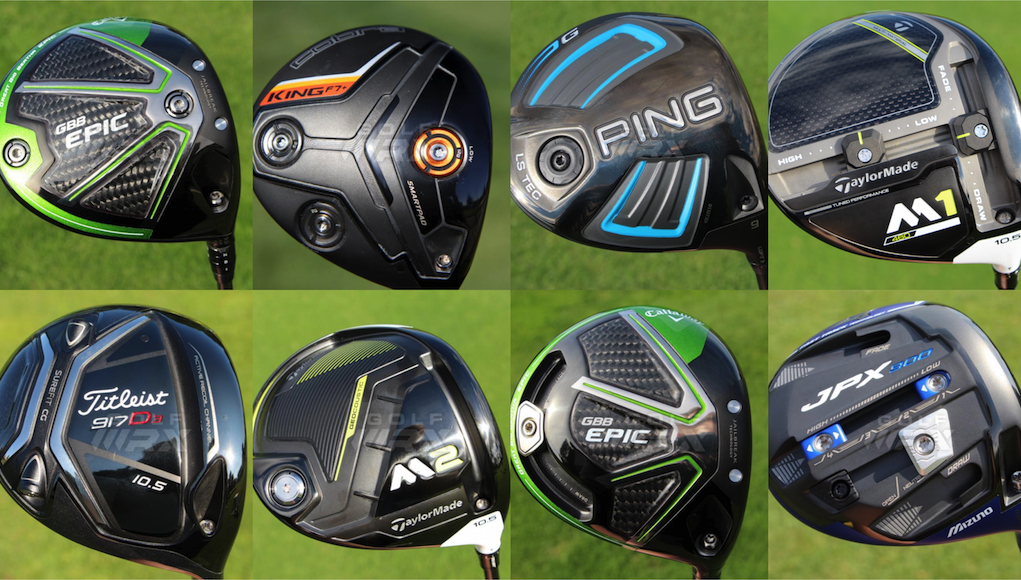
What determines the best driver on the market; is it the opinion of professional club fitters, professional golfers or testing results from a group of amateurs?
At GolfWRX, we believe all three sources can lead golfers to an answer. Being a website founded by passionate golfers with a mission to serve passionate golfers, though, we place a special emphasis on the opinions of our GolfWRX Members — the most knowledgeable group of golfers on the planet. No other group of golfers in the world tests golf clubs as frequently or as extensively as GolfWRX Members. So who better to poll to get an initial indication of the best performing drivers so far in 2017?
So we asked them, “What’s the best driver of 2017?” They voted for the three drivers they felt most worthy of the title and provided feedback about their selections in our special forum thread. You can see the results below (as of the first three weeks of voting), as well as quotes we pulled from GolfWRX Members about the drivers from our forum.
Remember that our polls will remain open for voting throughout the year, and we’re going to keep an eye on the percentages as more and more golfers have an opportunity to test these drivers. We’re also working on another Best Driver list, which will evaluate clubs in another important way. Stay tuned!
Keep in mind that there’s no single driver on the market that is the absolute best option for every golfer: that’s why nearly every manufacturer makes at least two different models. As this list indicates, however, some drivers are working better than others this year. Happy Testing!
Note: Forum posts were minimally edited for grammar, style, spelling and clarity.
Cobra King LTD Black (3.00 percent of votes)
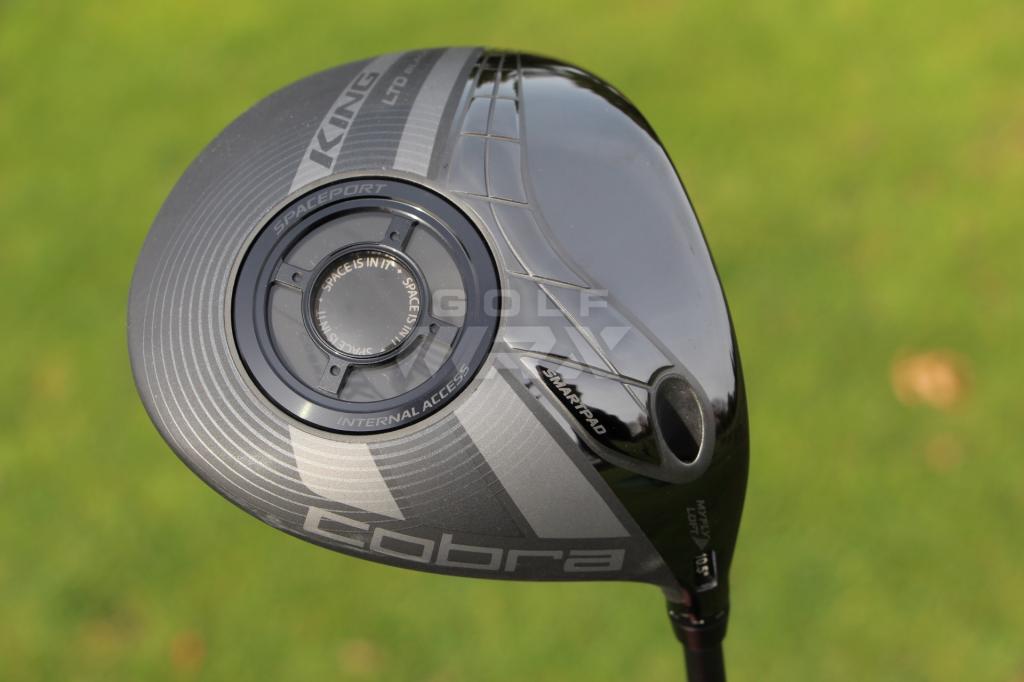
- The General: All-black LTD is really clean looking. I’m about to cover up the orange on my LTD with lead tape. Orange is played out
- mh7vw: Love my LTD, but wish the black finish (or even this gray) didn’t have that subtle checkering you see in some like. Prefer plain black.
- dbleag: I am a fan of the black/orange combo. The performance and sound of the LTD is very appealing to me. I also like that the standard length is 45 inches. For me, that helps it be super-accurate. With the low-spin design, I hit it longest of the current offerings and can’t remember the last time I missed a fairway. Straight, solid, low spin and nice.
Further Reading
Mizuno JPX-900 (3.20 percent)
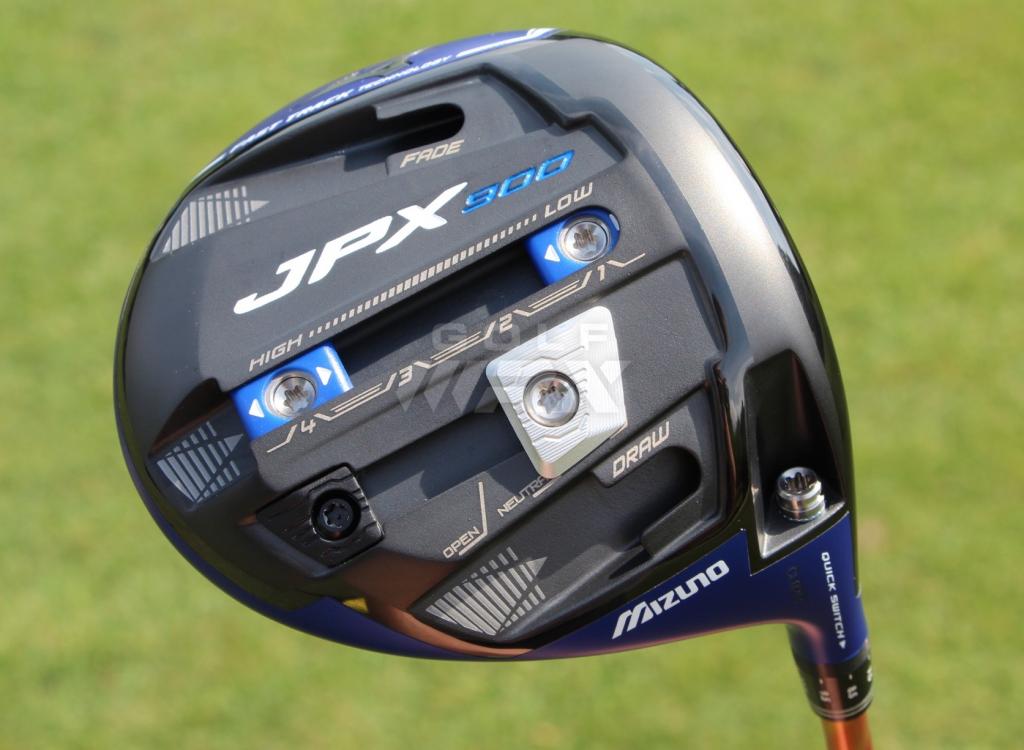
- johnnythunders: JPX goes straight. Best real-deal shaft and is long and very adjustable.
- KT35: That blue head looks awesome sitting on the ground. I hit balls off the toe and heel and didn’t see the big drop off in distance like the previous models.
- nmorton: The JPX-900 is definitely more forgiving compared to the JPX-850, and sounds much better. Though they did sacrifice a bit by going with a little larger profile, but it’s easy to get used to. The graphics are so so, but this driver performs. I’m really digging the Evo II (shaft).
- jay65: I can see that Mizuno is really making a decent effort with its drivers/fairways in terms of tech and aesthetics, and they compliment the new JPX-900 line of irons really well, but if they’re going to make any inroads they really have to address this issue of their custom shafts options. It’s rubbish.
- bok006: The JPX-900, after being properly adjusted by the fitter, gave me an extra 20 yards just like that. My swing speed suggested I was borderline S to X (flex), but the fitter said unless I was fighting a hook I should stick with the S.
- bubbagump: …the JPX-900, when properly fit, is just as long on a consistent basis than all the new models I tried in real life situations. It looks great, sounds solid and just knows the way to keep the ball in play.
- Chazb: I’m 69 years old, have a swing speed of 91 mph and played nine with the JPX-900 this morning. It was in the 40s with a brisk wind hit it around 220 to 230 yards. It was a fairway finder, has great feel and is one of the easiest to control drivers I have ever hit. I can’t wait ’til it is warmer and can dial it in more. So far I have the two weights all the way forward for a lower flight and the other set with a draw bias with 10.5 degrees of loft. This driver is the real deal; it may not be the longest or the shortest, but it is a fairway finder which IMO makes it a winner.
Further Reading
Ping G (3.80 percent)
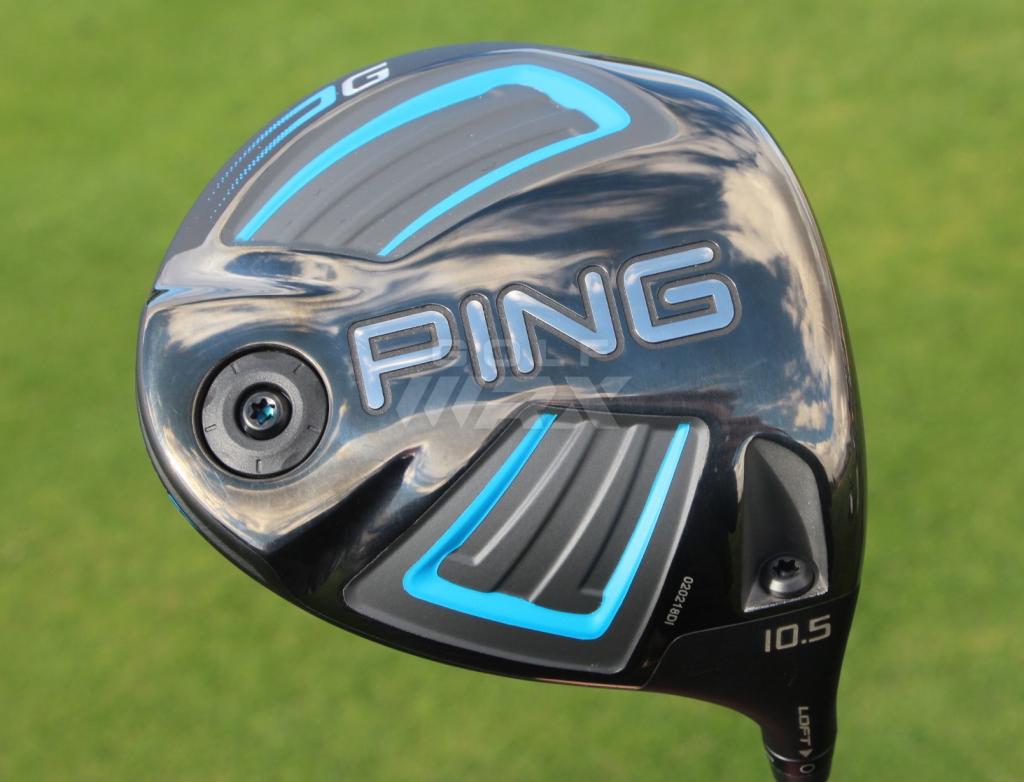
- Wesquire: Ping G is the most forgiving so it wins.
- bopper53: Ping G hands down. Great distance and the most forgiving.
- Dannydubbbs: The Ping G series is just too forgiving. The distance is comparable between most models, but Ping always seems to win out with forgiveness.
- Bruin Bear: The Ping G is going to be overlooked because it’s looked at as “game improvement,” but this driver is a beast. I liked the LS, but it requires a faster swing to get results and in the cold outdoors I just don’t have that all the time. I think the G is the perfect blend of performance and forgiveness.
- cmrl1986: Only reason I switched from the Ping G25 was that the G felt less harsh off the face. Same distance just about.
Further Reading
Cobra King F7+ (3.90 percent)
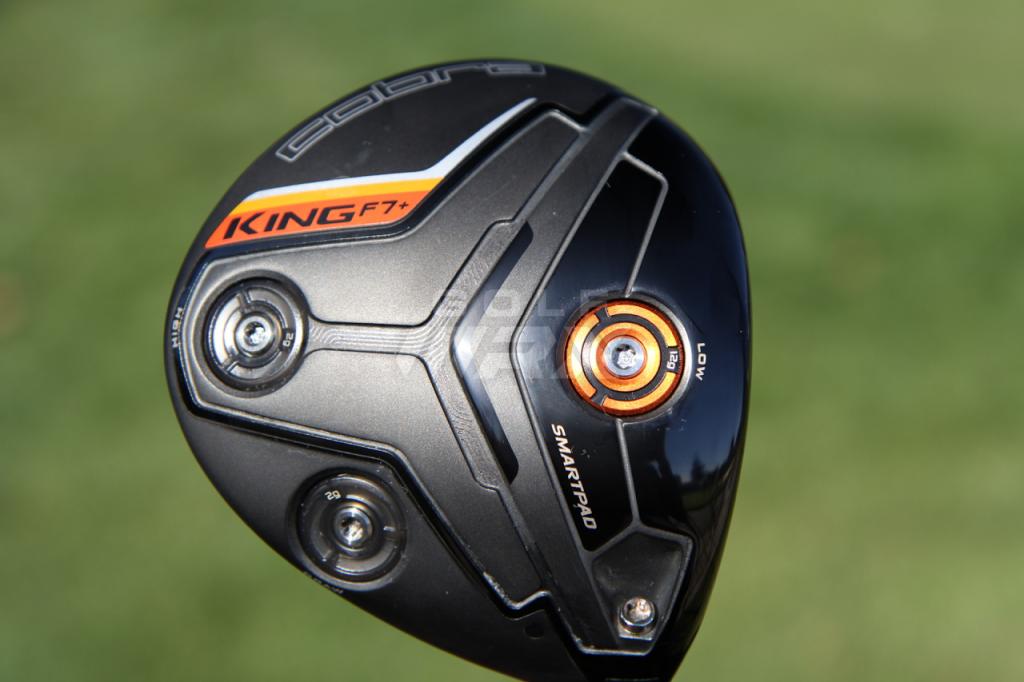
- EntourageLife: Ball really flies off face. Driver head controls spin well. Not one drive “ballooned” and trajectory was high and best of all… very easy to work ball right to left for a confident draw.
- Gollie: The F7+ is another great offering from Cobra… I didn’t get the “MAN, this is gonna take my LTD out of the bag” feeling, but it has very good sound, feel and performance.
- J13: F7+ is a great offering from Cobra and IMO is in the top-3 drivers this year. Epic is the standout for me numbers wise, then M series and F7+ are right behind it. Love the Agera (shaft) in there!!! Such a great shaft; I can’t seem to get mine out of the bag.
- Golfer from MO: Hit both Cobras lefty and as a lefty the LTD is the shizzle. Last year it was the LTD and Big Bertha down to the absolute wire… the F7+ is more workable than the LTD, but not longer and a little worse on mishits.
- Boognish: I took a few swings with the F7+ at Golf Galaxy yesterday. 9.5 degrees with heaviest weight forward. The stock shaft is actually the same model I play in my GBB (albeit in smoked black instead of yellow). Ball flight and distance were similar to my GBB with good consistent sub-3000 backspin. Sound was OK, feel was harder than the GBB.
- thechief16: Just from the range (no LM), I didn’t see a noticeable performance improvement with the F7+ over the original King LTD. And I like the look and sound/feel of the LTD better.
Further Reading
Ping G LS Tec (4.90 percent)
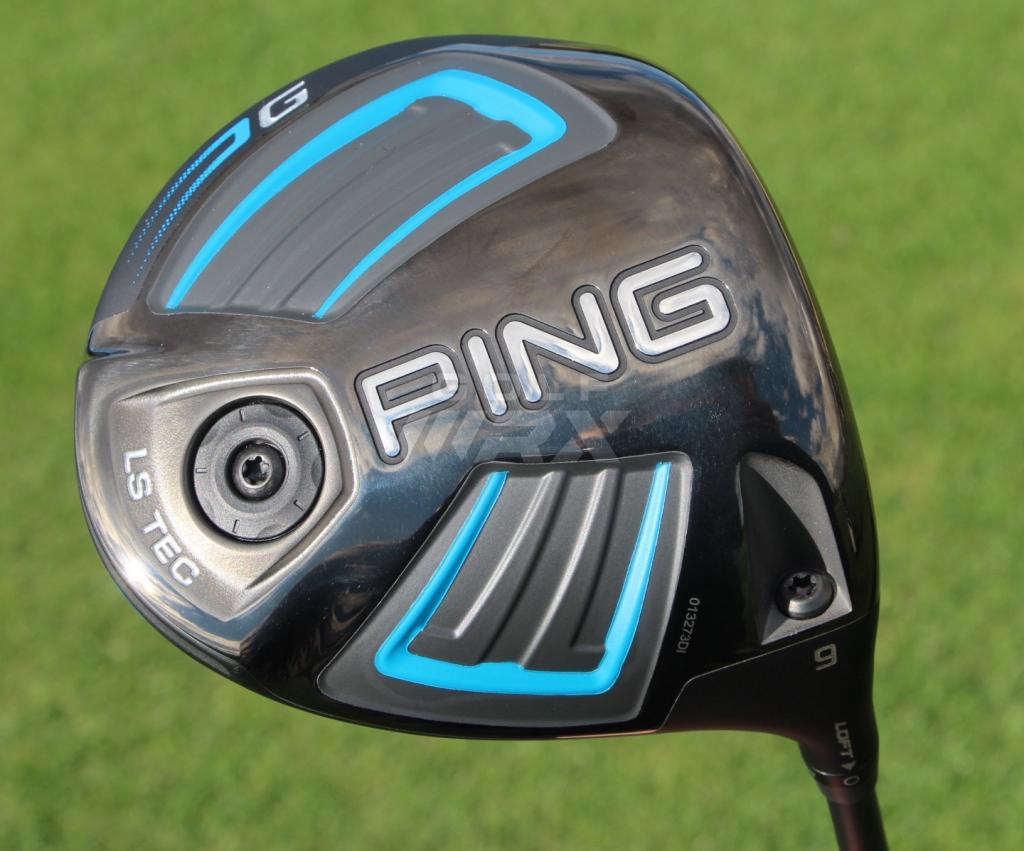
- drvrwdge: I played the G LS with the Ping Tour 65X (shaft) tipped an inch for about a year. Just put the HZRDUS Yellow 75 6.5 tipped an inch and never thought it was possible, but it’s longer and straighter. Best driver shaft combo I’ve ever hit. You can feel that HZRDUS throughout the entire swing. Really gives you a solid connected feel.
- Mtngolfer1: I am not sure that I would consider this a 2017 Driver, but my vote went to the Ping G LS Tec. The fact that my G is still holding its own against the latest 2017 releases has me very excited to see what Ping will release later this year.
- 3woodvt: Fairway finder and plenty long.
- pitchinwedge: I’ve found the LS to be nearly as fade biased as the M family. I get pretty good results with the LS by making a conscious effort to make more of an in-to-out swing. Any lapse in concentration and everything goes right. The M’s require even more effort, which is the reason I stayed with the LS instead.
- 3 Jack Par: After an up and down year with the G LS, I’ve actually recently gone back to my G30 LS head. I only have a couple of rounds as a sample so far, so I can’t really draw a conclusion about whether one or the other is better, but with the same shaft it seems like my G30 head might be a little longer. Honestly, the performance differences are pretty minimal if you really compare the two generations.
Further Reading
Titleist 917D3 (5.30 percent)
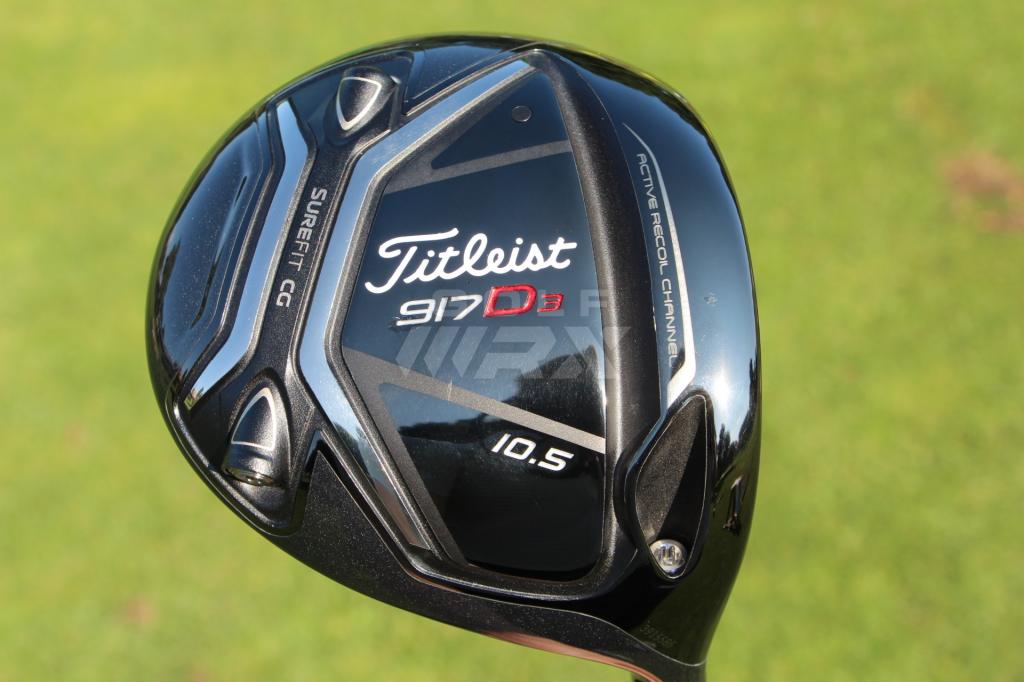
- Gava: The 917D3 is in my bag now, and I’ve found it incredibly long with a recently purchased Graphite Design Tour AD MJ 7TX shaft. Feel and accuracy has been a real improvement as well.
- Togatown22: I find my 917D3 to be just as forgiving as my 915D2 was, and man do I prefer looking down at the head shape and color versus the 915. Very confidence inspiring.
- NIxhex524: I would definitely give the D3 a whirl. I feel like Titleist has made great strides at making the smaller head way more hittable for us ams.
- KPH808: So in conclusion, I was hitting the ball about 9 yards further on average and 3-4 mph faster ball speeds with the 917D3 vs. the 915 D4. The biggest thing for me was the forgiveness between the two; the 917D3 was more forgiving on mishits.
- brushie: The 917D3 head feels soft like the 910 and sounds great. I never had an issue with the 915 sound; it wasn’t great, but it didn’t bother me too much. This is much better, though. The 917D3 head shape is perfect to my eye as well. The area where the 917 shines is forgiveness.
Further Reading
TaylorMade M1 440 (5.35 percent)
- Tigermatt31: The M1 440 is best driver I’ve had ever.
- TollBros: The M1 440 is definitely lower spin than the M1 460 or M2 from last year. Launch angle isn’t really any lower, but spin is lower for sure.
- specimania: This year’s 440 is more forgiving.
- MCoz: Yes, this 440 is more forgiving, and yet it also appears to be more workable than both of the previous M1 and M2s.
- nitram: To save you a bunch of reading and crunching numbers, I quickly concluded there was a little more forgiveness and exactly +0.4 mph ball speed with the 440. By forgiveness I simply mean this: A 1.48 smash 440 will give you the same ball speed and distance as a 1.49/1.50 430. But if you get a 1.50 from both there is no measurable gain. Side-to-side dispersion was better by 4.7 feet with the 440. Workability was a wash between them, although the 430 seems a bit more fade biased whereas I’ll describe the 440 as a scosche more neutral.
- tj24: I hit the M1 440 with my Aldila RIP at an 80-gram X-flex. For me, the spin numbers were around 1700 rpm which is probably to low for my swing. I did, however, like the shape of the head and I felt like I could easily work the ball both ways.
- halfsumo: I really think they nailed it with the shape of this 440 head. Nice pear shape, no weird bulges or ridges that you have to get used to.
Further Reading
- GolfWRX members gain 7 yards on average with 2017 TaylorMade M1, M2 drivers
- 12 Important Changes to the 2017 TaylorMade M1, M2 Drivers
Titleist 917D2 (6.65 percent)
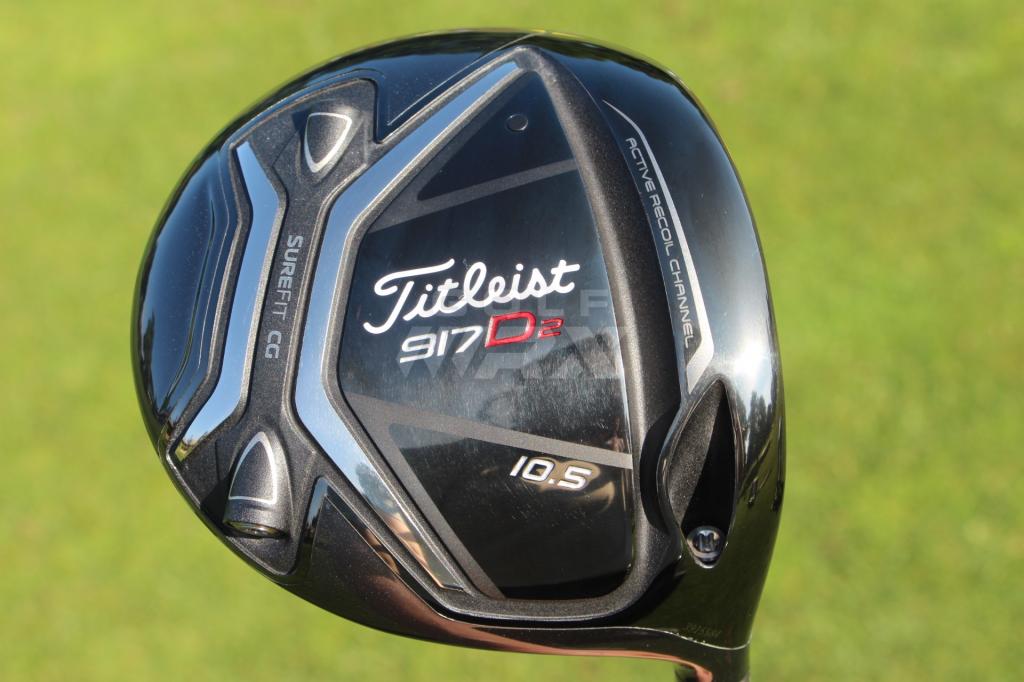
- tsletten: Love the sound of the 917D2.
- bladehunter: No doubt the 917D2 is an accurate, forgiving driver that doesn’t look as big as it is and sounds fantastic.
- JStang: Maybe it’s just me, but I find the face to be more shallow (top to bottom) with the 917D2 than other drivers that I’ve tried lately.
- LuckyLowbrow: I was actually spinning it too low with the D4. Going up to the D2 normalized my spin rate, but led to such an improvement in consistency across the face.
Further Reading
TaylorMade M1 460 2017 (11.81 percent)
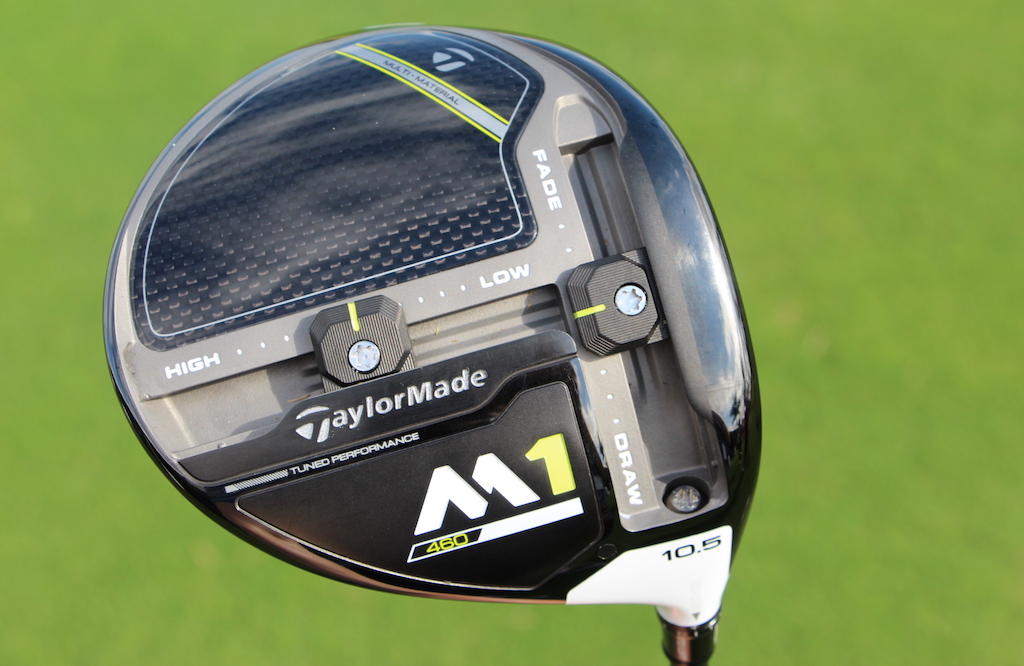
- Ereim: I ended up going with the M1 460. It gave me a slightly tighter dispersion, and I liked looking down at it slightly more.
- jdenham15: The 2017 TaylorMade M1 is a great driver, but I tend to miss wide right and struggled to turn it over.
- ZBigStick: The M1 460 gave me the best results. Was able to increase launch without much added spin with the (T-Track) weight. Feel is good and felt forgiving; dispersion results backing that up.
- BillMurrayGolfing: The face is hot, receptive, thin and makes a nice sound. I like that.
- JStang: Sound and feel were both fantastic. I couldn’t ask for much more in the sound and feel department than what this club offers. Plenty of feedback was provided based on impact as I would expect. I could easily tell where I missed based on feel.
- tnord: Just as another tester found, moving the weight back and forward absolutely does impact how the club sounds. I’m much more a fan of the weight back.
- chickenpotpie: Moving the slider to the draw position made the feel of the driver a little harsher. Feel was much much smoother with that weight in the middle. I didn’t see any such changes with the front/rear slider.
Further Reading
- GolfWRX members gain 7 yards on average with 2017 TaylorMade M1, M2 drivers
- 12 Important Changes to the 2017 TaylorMade M1, M2 Drivers
TaylorMade M2 2017 (11.86 percent)
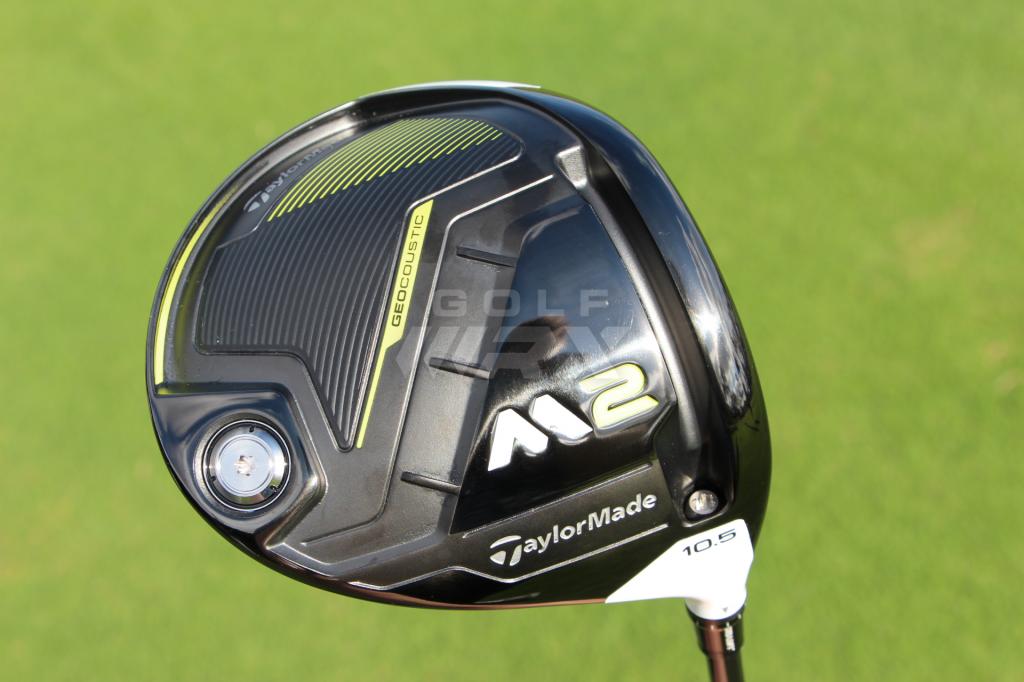
- ZBigStick: I liked the feel of the new M2 but seemed to get better results and numbers with the new M1. Could be the extra 5 grams of head weight?
It was dynamite with the GD TP-6 (shaft)! - erock9174: On Trackman it didn’t put up the most ball speed, but counting all shots the M2 had the longest average distance.
- gripandrip: The M2 seems to have a little bit of a fade bias for me. And the head is HUGE. Maybe it’s a mental thing to be able to turnover a head that large.
- Bomber_11: M2 has very big shoes to fill, as the 2016 M2 was arguably one of the best drivers of the last 3-4 years.
- LONG&STR8: It’s hard to ignore the sound of the new M2. That may be TaylorMade’s biggest fail with that driver, as the sound and feel was one of the best things about the first version that I’ll have in the bag until something better comes along.
- Z1ggy16: The new M2 was terrible for me, not sure why. Unsure if it was the shaft I used but it spun up like a monster and ball speeds weren’t any better than previous M2.
- Peanut191: I don’t really think that the new M2 was much of a step backward, probably more that it doesn’t seem like a big step forward compared to last year’s model. I was hitting my 2016 M2 against a 2017 M2 indoors (which usually amplifies the louder, more obnoxious sound) and I didn’t notice that much of a difference in sound. It could have been that I might have just happened to get a hold of a head that was more muted than normal with the new one, but I just didn’t notice much difference. Performance wise, I could tell that the 2017 was slightly more forgiving than the 2016 model, but I was basically getting the same ball speed and spin numbers, so I didn’t see the need to upgrade.
- gioguy21: Played 54 holes this weekend. The M2 was as reliable as it could get. I hit 11/12 fairways Friday, 10/12 Saturday and 5/9 or so yesterday (windy). Controllable, just wants to go straight. The sound no longer bothers me. I think it’s when hitting indoors or in range bays that it gets unbearably loud. Makes a different sound when hit on the screws I’ve found, similar to last years M2/M1 with less high-pitched ring. The forgiveness is very obvious, as I hit a couple that were close to center of the face but either high or little out toward the toe that flew similar trajectory and distance to how a well struck shot would react. I think where this driver really shines is the ability to either tee it high and hit it with higher trajectory or the ability to hit it lower with a low tee (3/4 of the ball under the crown) and hit laser beams that don’t move left or right.
- G-Bone: From what I’ve seen on Trackman, 2017 M1 was a big jump from 2016; however, 2016 M2 was so good, 2017 is a minor jump.
Further Reading
- GolfWRX members gain 7 yards on average with 2017 TaylorMade M1, M2 drivers
- 12 Important Changes to the 2017 TaylorMade M1, M2 Drivers
Callaway GBB Epic (14.91 percent)
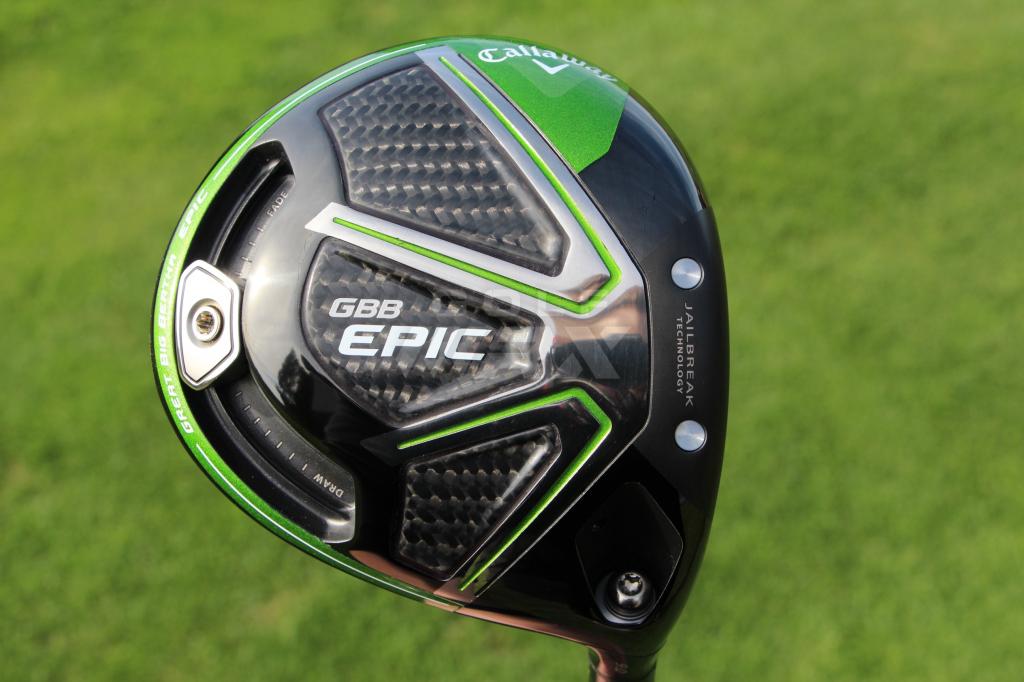
- HDTVMAN: I hit both the Callaway Big Bertha Fusion and Epic with a 44.5-inch UST Recoil F3 shaft and the results were very close. From customer testing, it appears the Epic is longer for those with higher (95+) swing speeds. I have also seen that 44.25-44.5-inch lengths promote tighter dispersion with customers, no loss of distance and better over-all drives.
- mbbrewer: Tried them all and for me Epic was the one. Fastest ball speed, lowest spin and tightest dispersion.
- Ereim: Epic felt great, looked great and the numbers were basically 99.9 percent optimized for my swing.
- johnnylongballz72: There is Epic and there is the M series… then there is everyone else. The votes here show it, the PGA Tour use shows it and launch monitors everywhere show it.
- misplacedtexan83: GBB Epic/Sub Zero pushed the envelop in design and materials to produce increased ball speed and gains. For once a driver did what a company said it would do.
Further Reading
Callaway GBB Epic Sub Zero (16.91 percent)
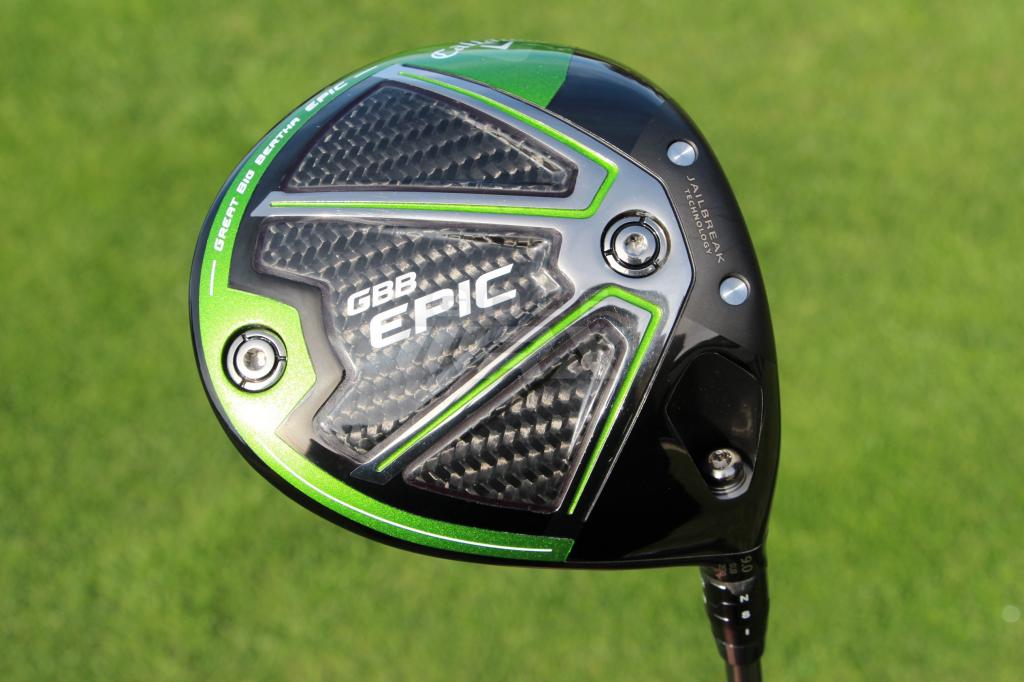
- jdenham15: I tested the Epic Sub Zero and Epic against my 2016 TaylorMade M1 and the ball speed was 5 mph higher on average, which gave me about 10 yards more carry disstance. That was great, but the part that sold me was the forgiveness. I love my Epic Sub Zero. I feel like it’s easier to turn over and I can work it both ways.
- Z1ggy16: Sub Zero was hands down the best, including my gaming M1 (yeah, not even top-3) due to the combination of lower spin, good forgiveness and feel and looks.
- jimhaire: I had a 2016 M2 and went with the Epic Sub Zero. The look at address suited my eye and the feel off the face was better for me. And the club went straight.
- Sef: I have tested a lot of these drivers and for me the Epic Sub Zero was so much better than everything else. I wish I could just apply all three votes to it.
Further Reading
Members Choice 2017
- LIKE652
- LEGIT92
- WOW45
- LOL39
- IDHT16
- FLOP39
- OB34
- SHANK255
-

 19th Hole2 weeks ago
19th Hole2 weeks agoDave Portnoy places monstrous outright bet for the 2024 Masters
-

 19th Hole4 days ago
19th Hole4 days agoJustin Thomas on the equipment choice of Scottie Scheffler that he thinks is ‘weird’
-

 19th Hole2 weeks ago
19th Hole2 weeks agoTiger Woods arrives at 2024 Masters equipped with a putter that may surprise you
-

 19th Hole4 days ago
19th Hole4 days ago‘Absolutely crazy’ – Major champ lays into Patrick Cantlay over his decision on final hole of RBC Heritage
-

 19th Hole2 weeks ago
19th Hole2 weeks agoTwo star names reportedly blanked Jon Rahm all week at the Masters
-

 19th Hole1 week ago
19th Hole1 week agoReport: LIV Golf identifies latest star name they hope to sign to breakaway tour
-

 19th Hole2 weeks ago
19th Hole2 weeks agoNeal Shipley presser ends in awkward fashion after reporter claims Tiger handed him note on 8th fairway
-

 19th Hole1 week ago
19th Hole1 week agoBrandel Chamblee has ‘no doubt’ who started the McIlroy/LIV rumor and why

